Jeanne Hébuterne, artist and muse of Amedeo Modigliani
Amedeo Modigliani is known for his distinctive portraits and nudes characterised by their elongated oval faces, graceful lengthened noses, and small bud mouths, often with blank sad eyes appearing to gaze nowhere.
Jeanne Hébuterne was the love of Modigliani’s life and his sole muse for his last three years. She was also a talented artist but didn’t pursue a career in art after she met Modigliani.
My muse of Jeanne has been influenced by Modigliani’s portraits of her, some of which exaggerate and distort her beauty, not conforming to the conventional ideal. Modigliani saw beauty in the soul and believed that once he knew the inner being of a person he could paint their eyes.



Jeanne Hébuterne
Jeanne Hébuterne was born on 6 April 1898 in the Latin Quarter of Paris into a strict Roman Catholic family. Jeanne’s brother, André was four years older than her and they both showed artistic talent from an young age. Despite her conservative, petty-bourgeois parents, in 1914 Jeanne was allowed to enrol at the Ecole des Arts Décoratifs and join her brother Andre at the Académie Colarossi. Their parents believed that it could make them famous and well-off, so they encouraged them in their artistic endeavours.
The Académie Colarossi was situated at the centre of Montparnasse’ avant-garde culture, which was an area of vibrant diversity. Ideologically and culturally this place was entirely different to Jeanne’s home in Montagne Sainte-Geneviève, where she’d had a strict and sheltered upbringing.

Set against the backdrop of World War One, with food shortages and discontentment, the creative output of Paris was not curbed, in fact it was a time of bold experimentation and artistic freedom, resulting in the formation of two dynamic new art movements, Dada and Surrealism, alongside Cubism and Futurism.
Jeanne found her new surroundings stimulating and exciting, she was soon introduced to the lively Montparnasse artist community by her brother André.
Jeanne was a natural beauty with her stunning blue eyes, pale complexion and a long mane of dark brown hair, she was noticed and admired.
It was not long before she began modelling for several of the artists, including; Tsuguharu Foujita, a Japanese printmaker, Chana Orloff, a Ukrainian sculptress and Amedeo Modigliani.
There are dated drawings of Jeanne by Modigliani from 1916, but it is documented that she became his girlfriend around her nineteenth birthday in the spring of 1917.
Before he met Jeanne, Modigliani had had many lovers and affairs; women, apparently “fell for him” as he was handsome and had a roguish charm. In contrast Jeanne was innocent, shy and gentle with a serene, reserved nature, some said she had a solemn almost melancholic gaze.
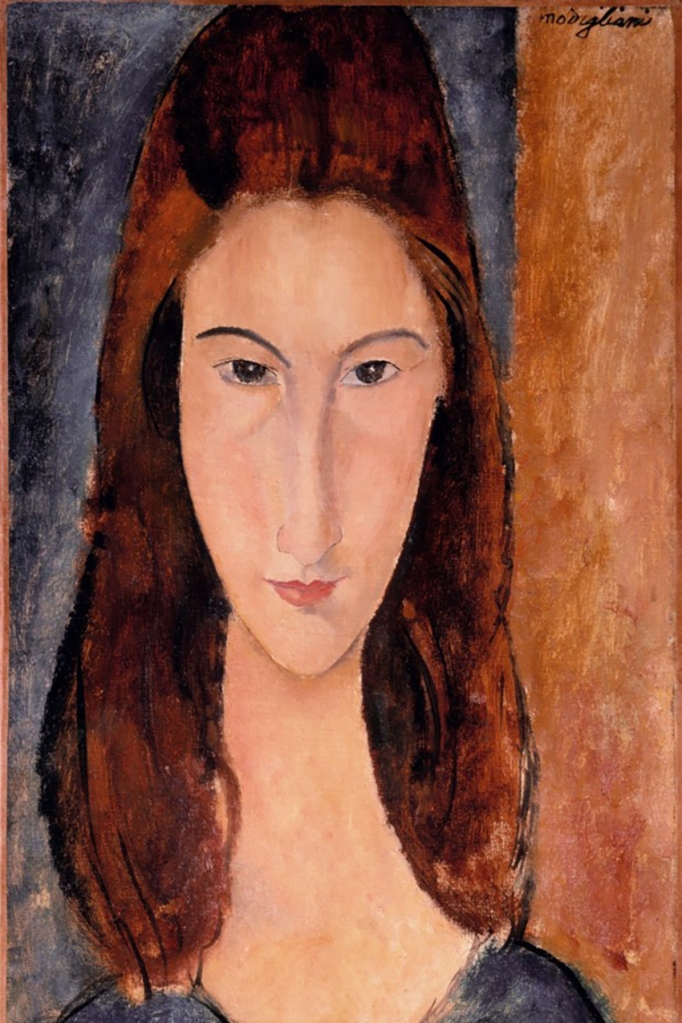
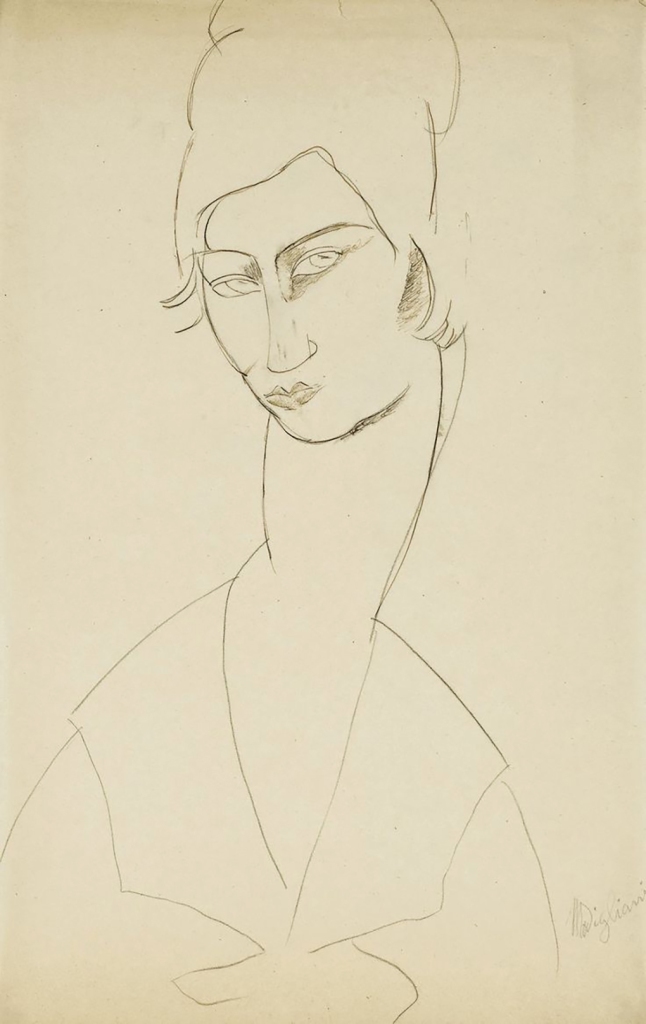
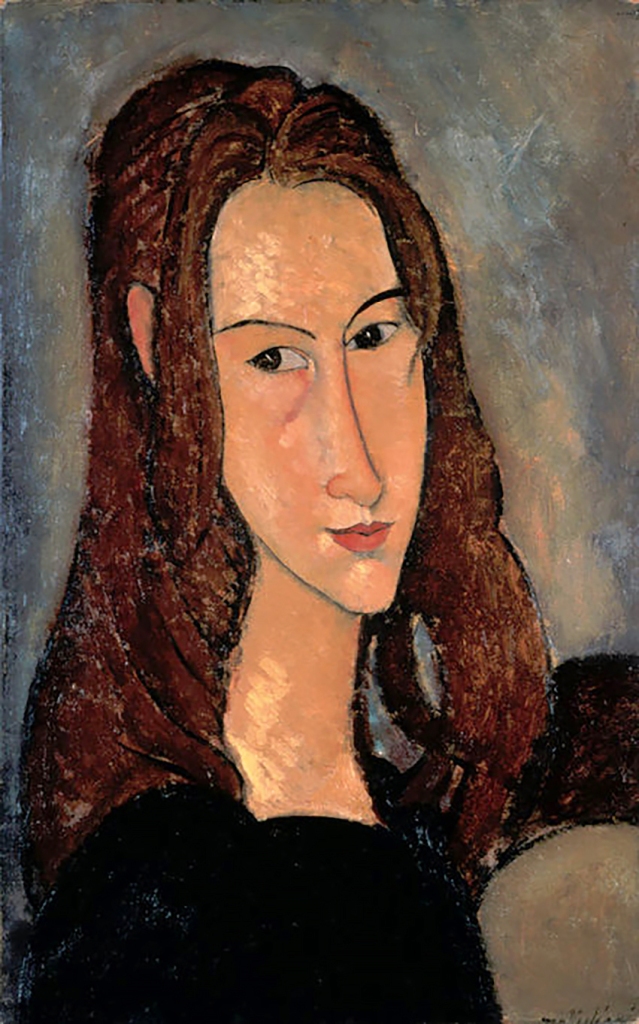
The pair fell deeply in love and Jeanne moved in with Modigliani, living frugally as his common law wife, in his unheated studio of two rooms. From then on she would model only for Modigliani, becoming his sole muse and primary subject for his art.
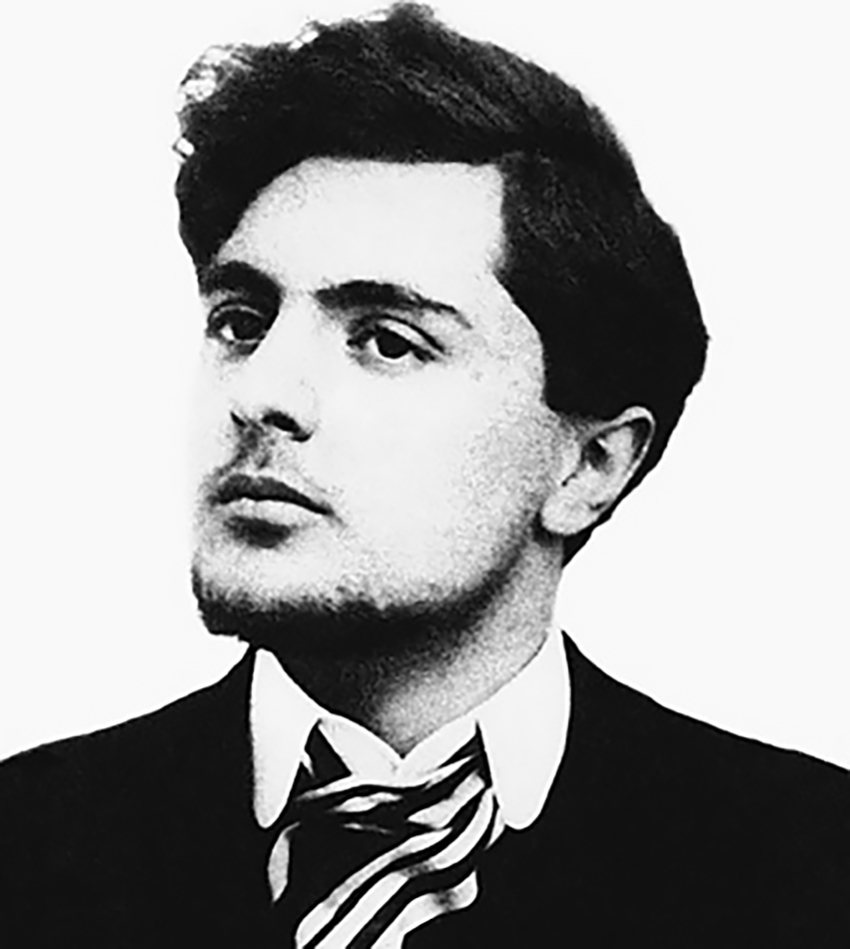
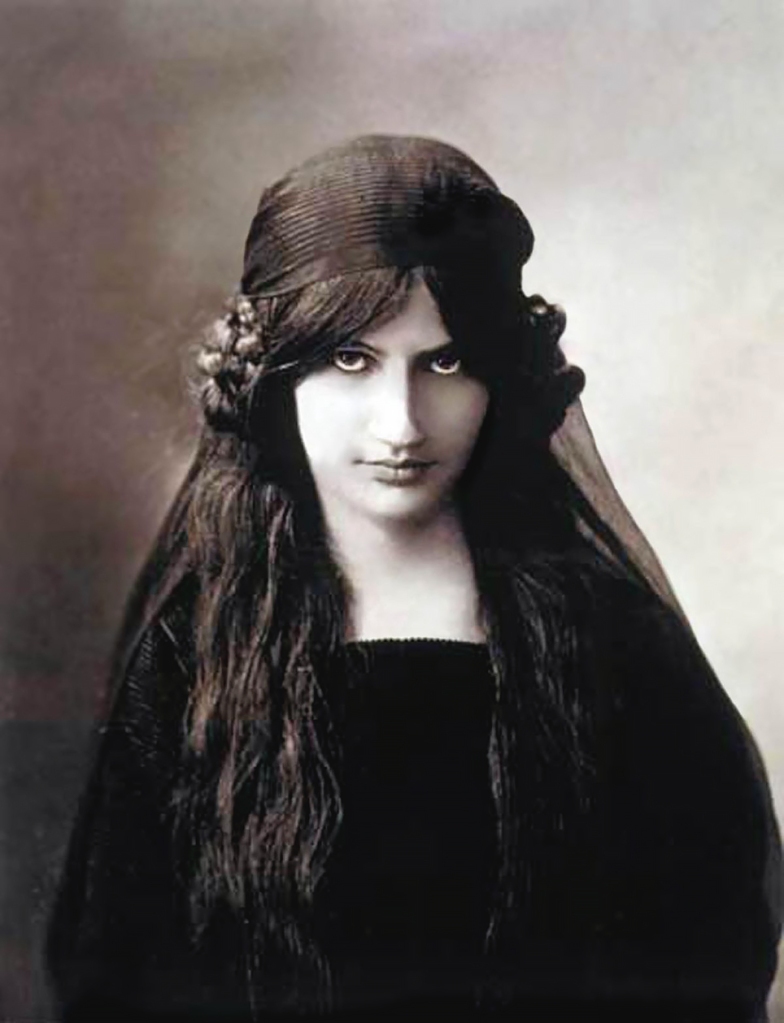
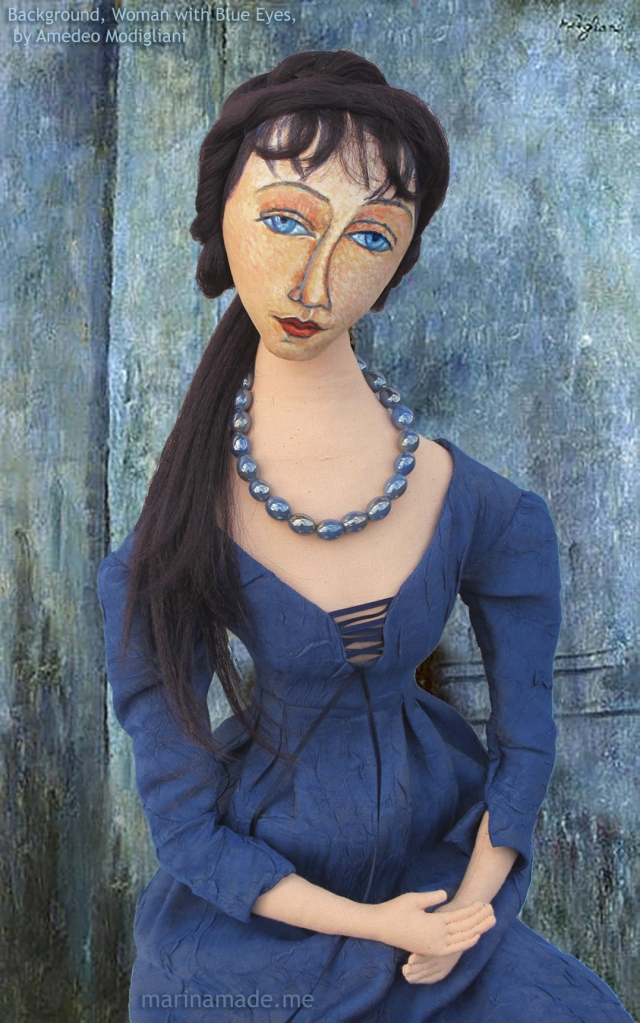
For several months Jeanne’s parents were unaware of the relationship between their underage daughter and the famous artist of ill repute. Their discovery was a shock to all the family, equally so was the fact that Jeanne had openly deceived them.
Modigliani was not what they had in mind for their daughter. Not only was Jeanne underage but he was 14 years her senior, Jewish and penniless; dressed like a vagabond, they saw him as a lecherous drunk.
However regardless of their objection Jeanne was hopelessly and selflessly in love with Modigliani and stayed by his side, even though he was not an easy man to live with.

It is true that Modigliani smoked hashish, drank to excess, sometimes passing out due to alcohol-induced blackouts, needing Jeanne and others including the police, to get him home.

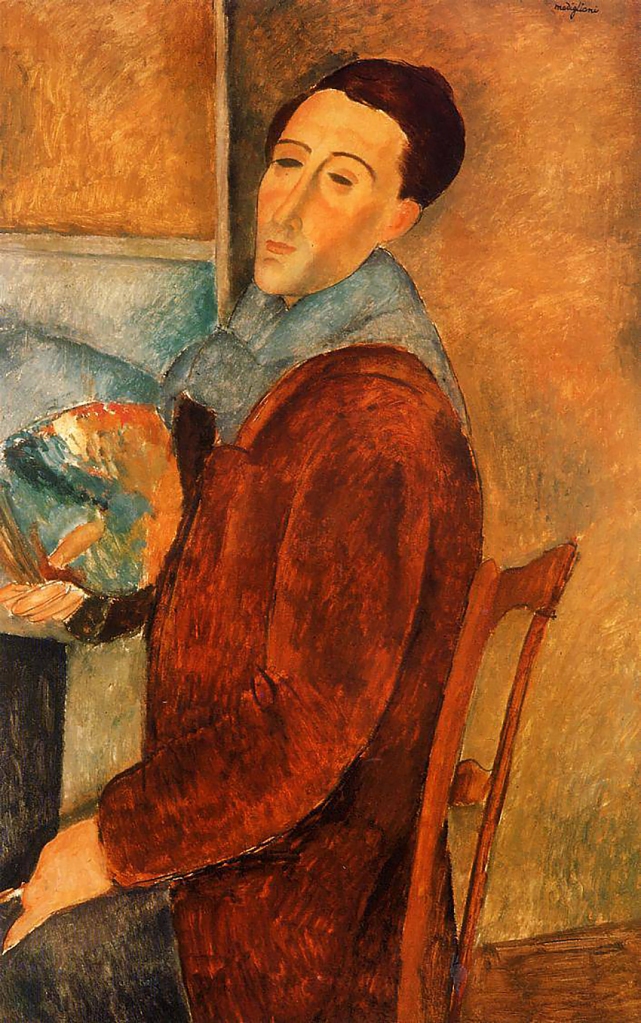
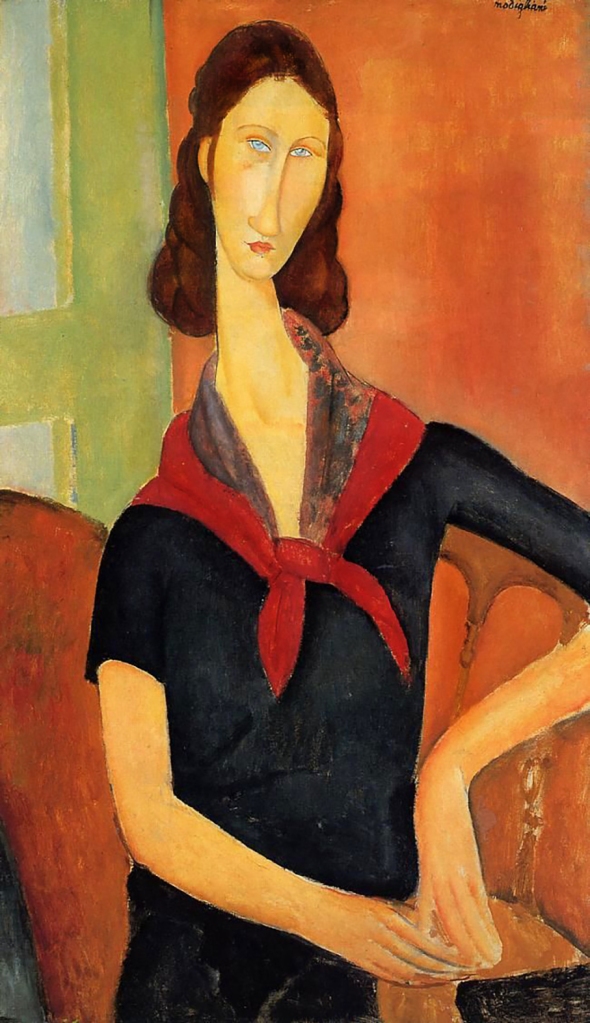
His friends hoped Jeanne would be a stabilising influence on him and their relationship would be successful in calming his extreme behaviour. Regrettably Jeanne failed to make him stop his alcohol and drug habits or pacify his behaviour and obviously she couldn’t do anything about his chronic tuberculosis. Despite this the pair enjoyed some happy times, especially when they painted together.
Jeanne Hébuterne the Artist
Jeanne used gouache and watercolour in her early paintings which were inspired by Maurice Denis and the Nabis group, but later she naturally became influenced by Modigliani. Her themes were mainly interior domestic scenes, portraits and still-life, though she also made numerous pencil drawings depicting street scenes and cafe life, which she signed but did not date.

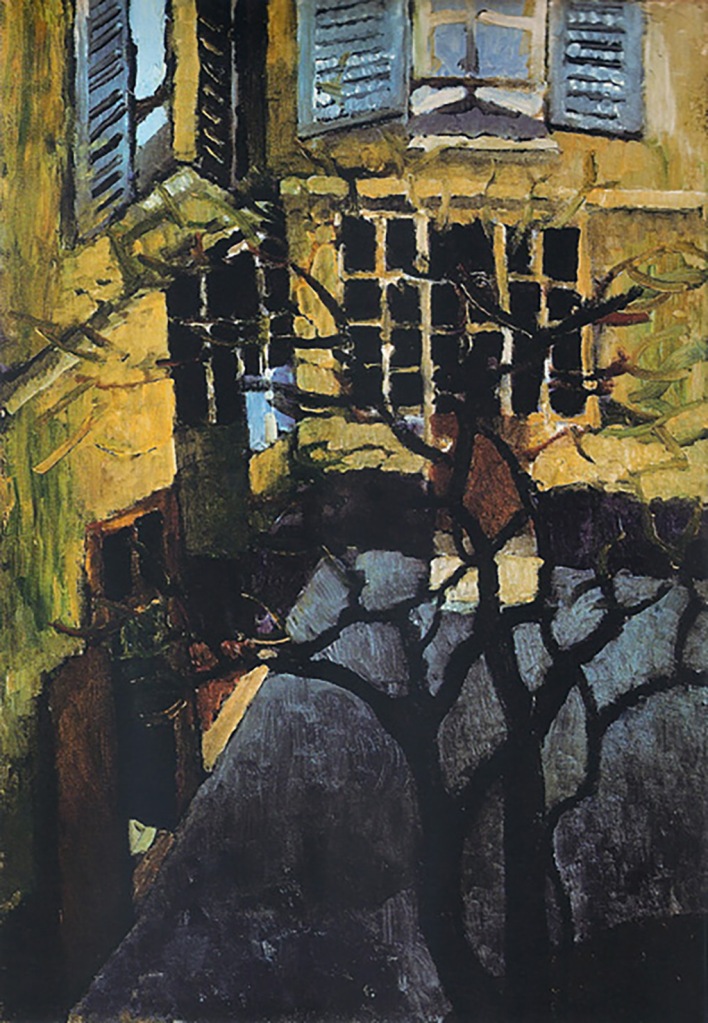
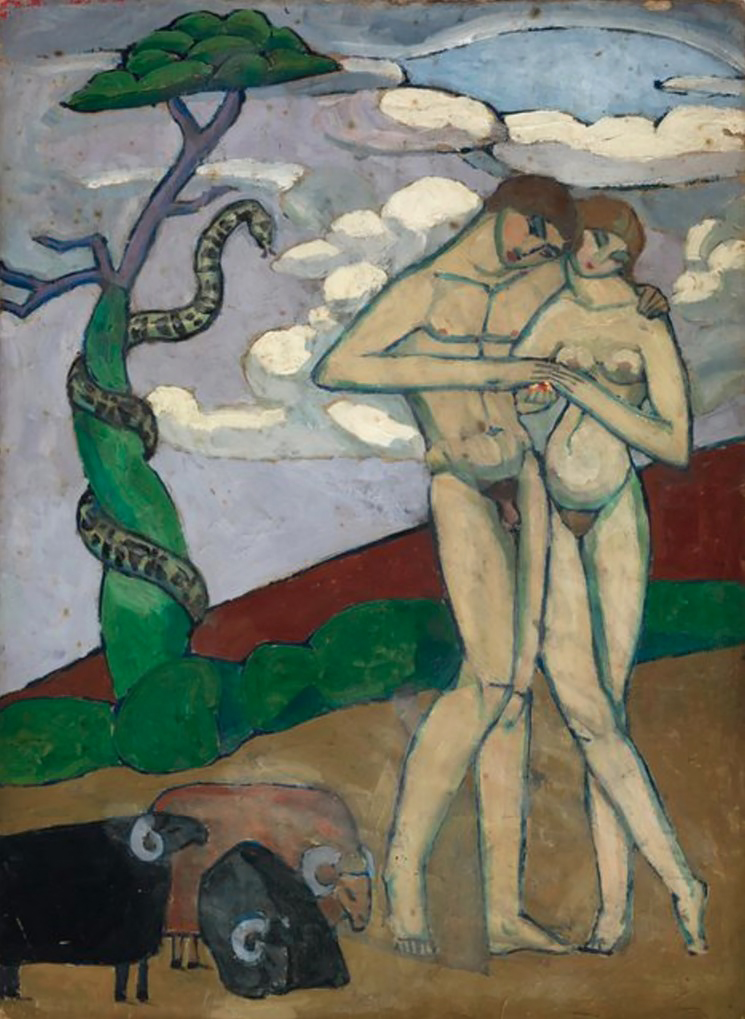
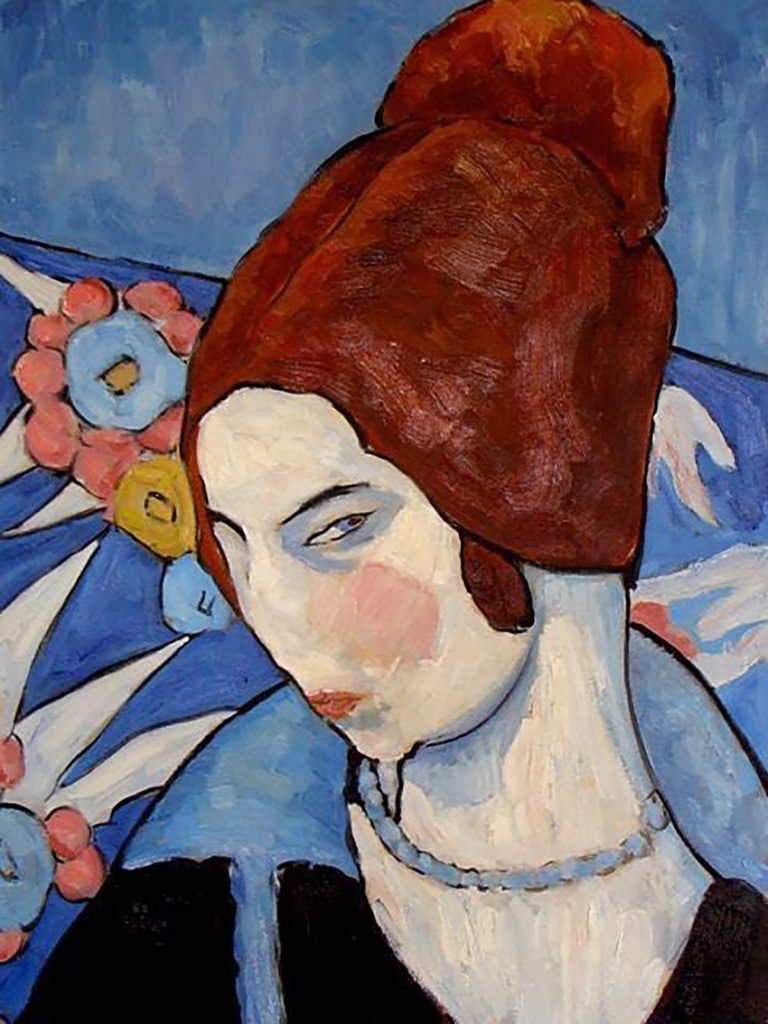
Click image to enlarge.
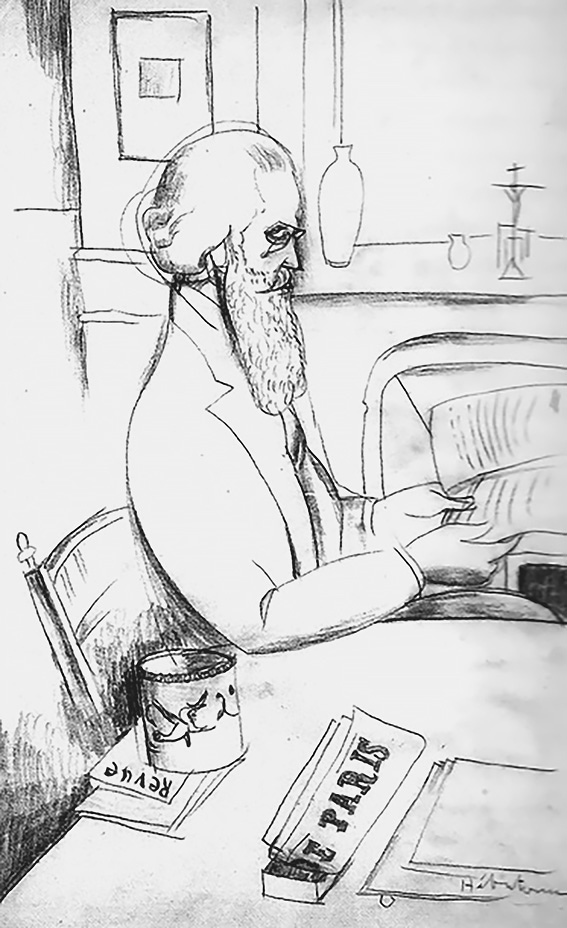
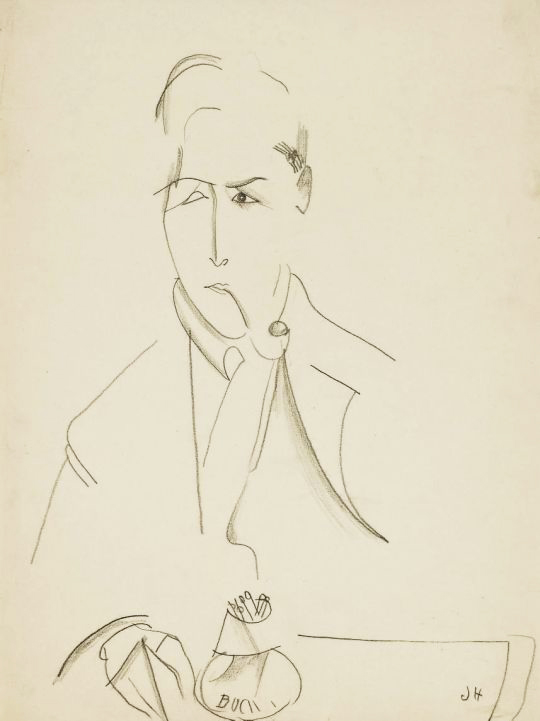
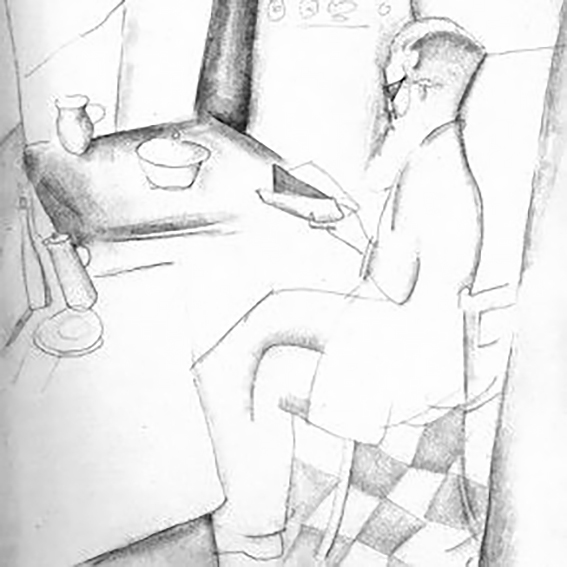
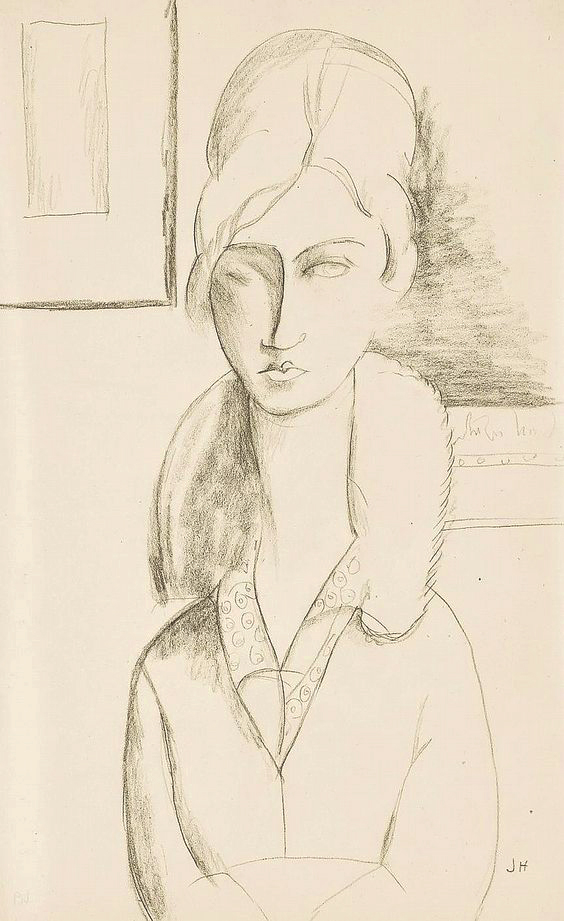
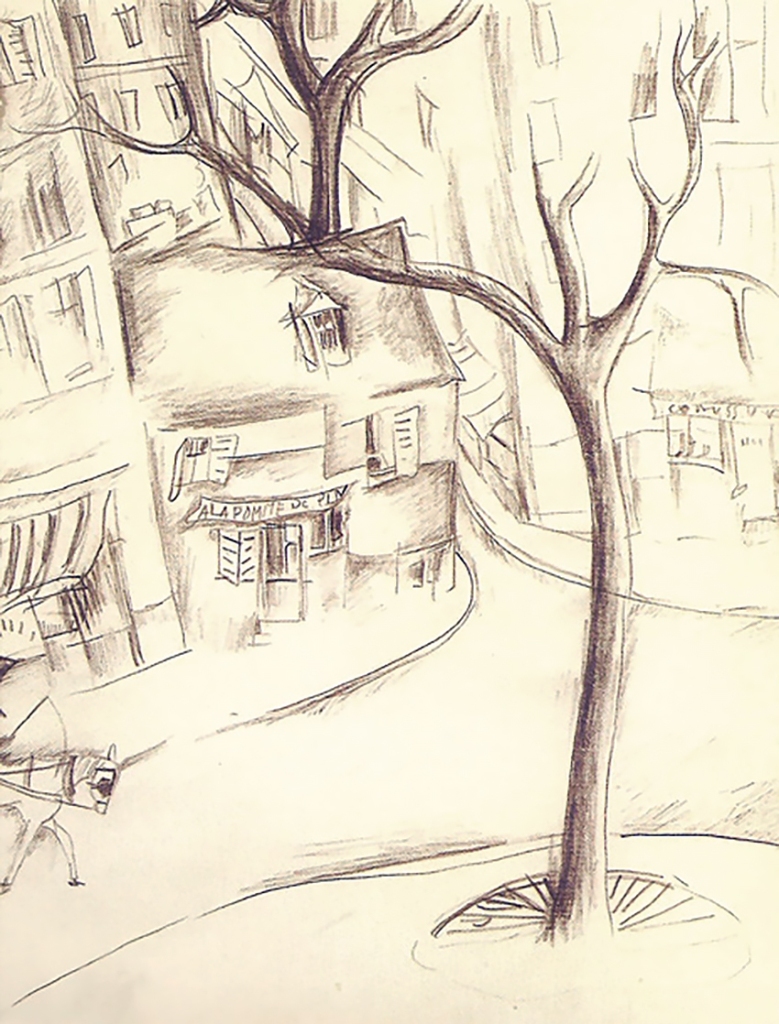
Jeanne showed talent but never exhibited and wasn’t encouraged to approach a gallery or art dealer, not even by Modigliani, who appreciated her talent, but being the most ruthless critic of his own work, knew from experience how difficult it was to make one’s way as a successful artist.
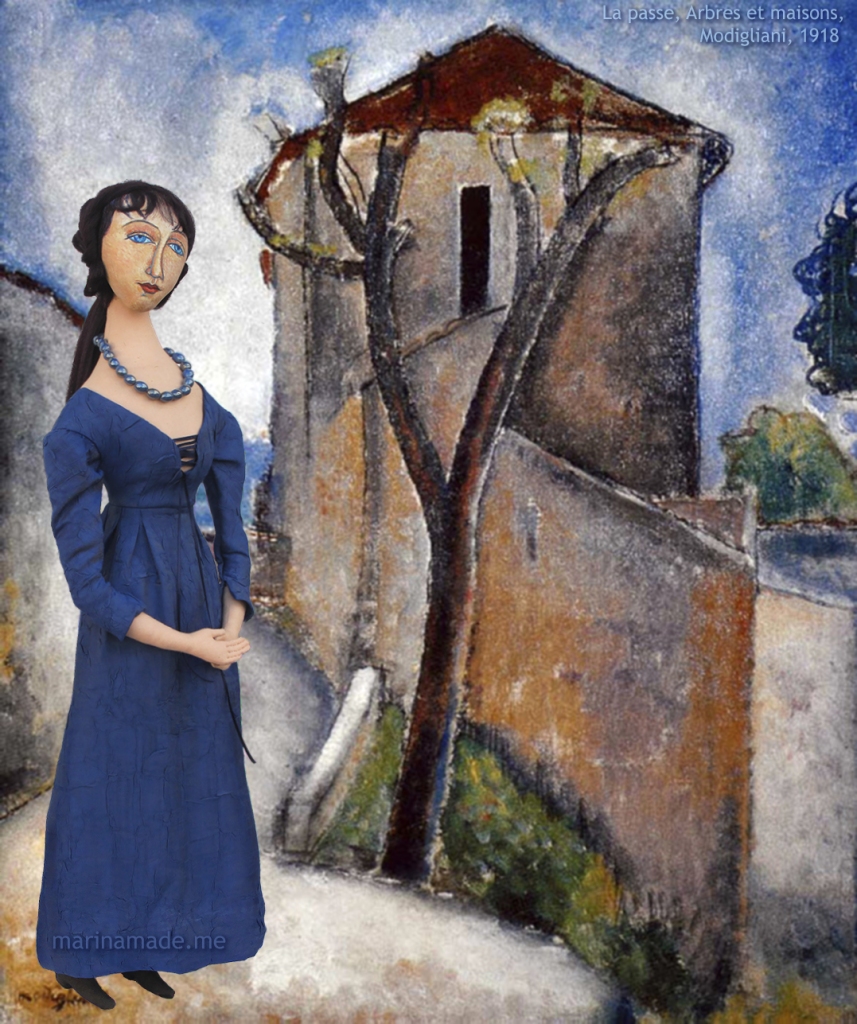

In March 1918 Jeanne became pregnant. Her brother André decided to have nothing more to do with her, which hurt her profoundly as they had always been close. Her parents gradually came to terms with the situation, seeing how deeply in love their daughter was. Jeanne’s mother tried to support her as much as she could, out of love, and she was one of the few visitors to the couple’s unheated studio home.

Later that year Jeanne, accompanied by her mother, travelled with Modigliani and a small group of artists to Nice and Cagnes-sur-Mer on the South coast of France. They wanted to escape the war and the possible German invasion of Paris, but also hoped that the warm, sunny climate of the Côte d’Azur’ would have a palliative effect on Modigliani’s fragile health.

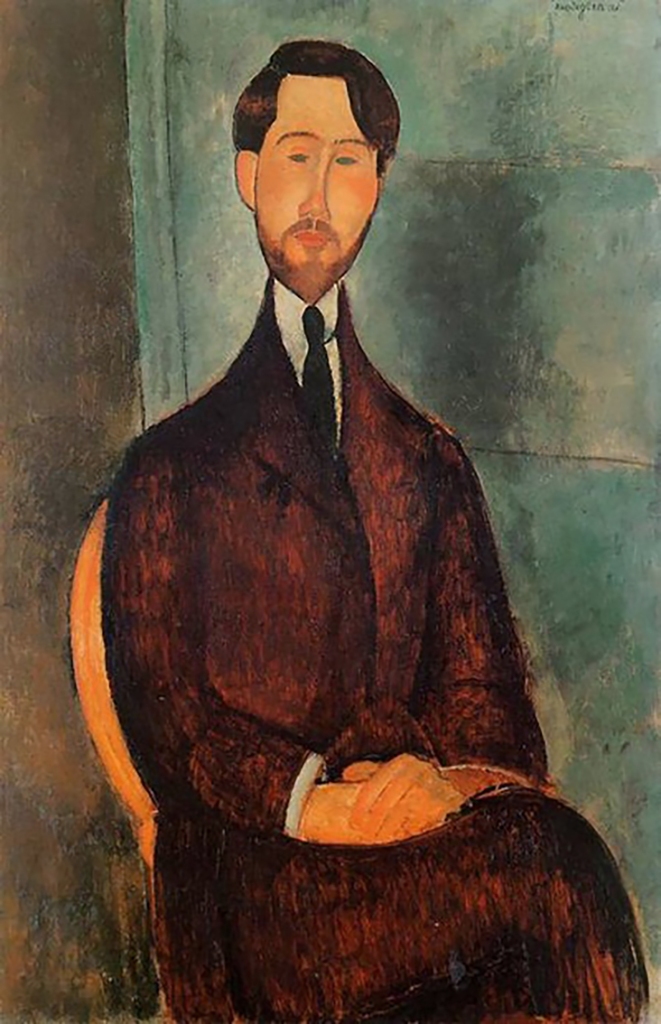

The idea conceived and paid for by Léopold Zborowski, Modigliani’s art dealer and friend, was that he would rent accommodation and a studio for the artist for a year, and his paintings could be sold to wealthy art experts who over-wintered there. Modigliani and his friend Chaim Soutine managed to sell a few pictures to tourists, but only for a few francs each. It was however a very productive time for both artists, the many paintings they made in Côte d’Azur would in future be their most successful and famous.

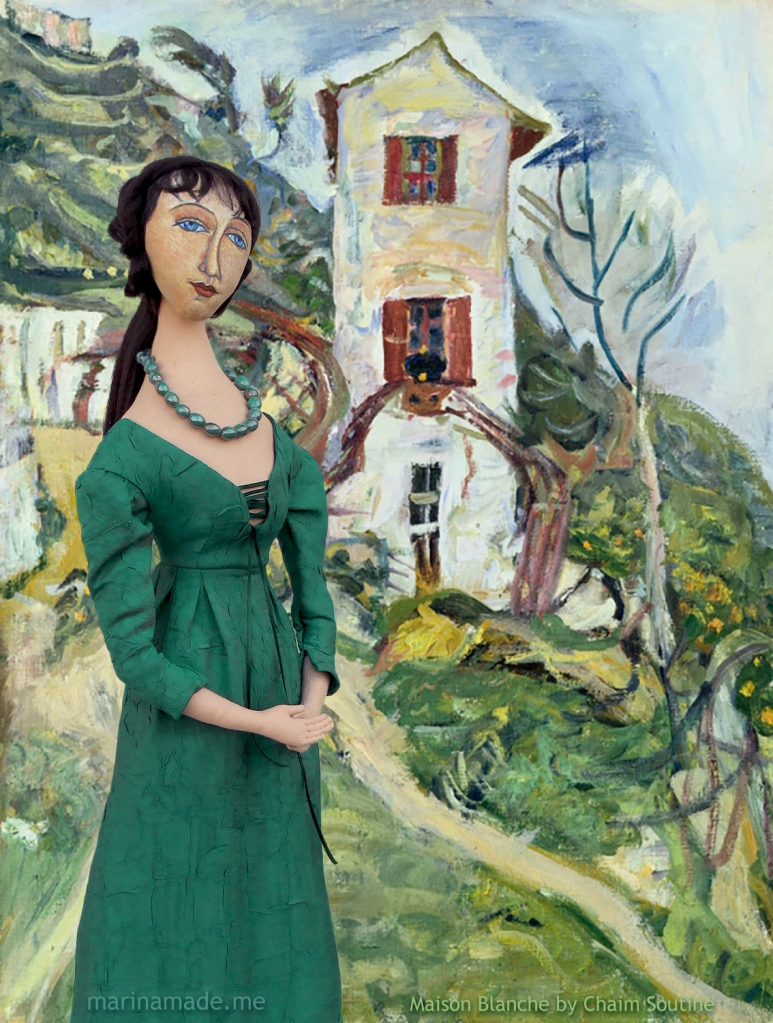
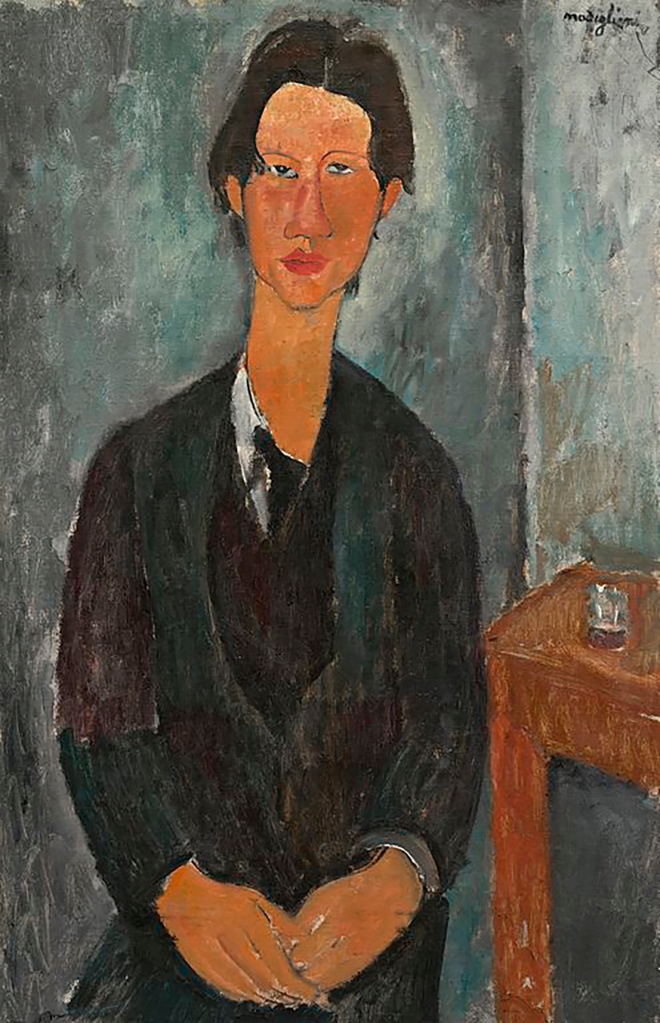
While in Nice, on 29 November Jeanne gave birth to their baby daughter who was born out of wedlock, she was named Jeanne after her mother.
Modigliani had fully intended to marry Jeanne in Nice, but in the confusion of having his wallet stolen and the aggravation of having to arrange the reissue of his papers, the wedding never took place.
They returned to Paris in May 1919 and Jeanne became pregnant again. By this time, Modigliani’s health was deteriorating badly, accelerated by substance abuse.
Poor Jeanne, her life with Modigliani was depressingly hard work, even more so now with a young baby and another pregnancy. Their unheated home and unending destitution came with obvious physical hardships, but the discord with her brother, lack of honesty with her parents and her growing awareness of the incurability of Modigliani’s afflictions, who was now spitting blood, were leading her to despondency and despair.
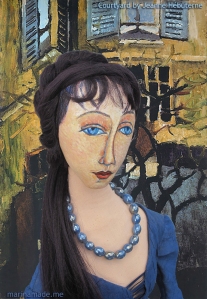
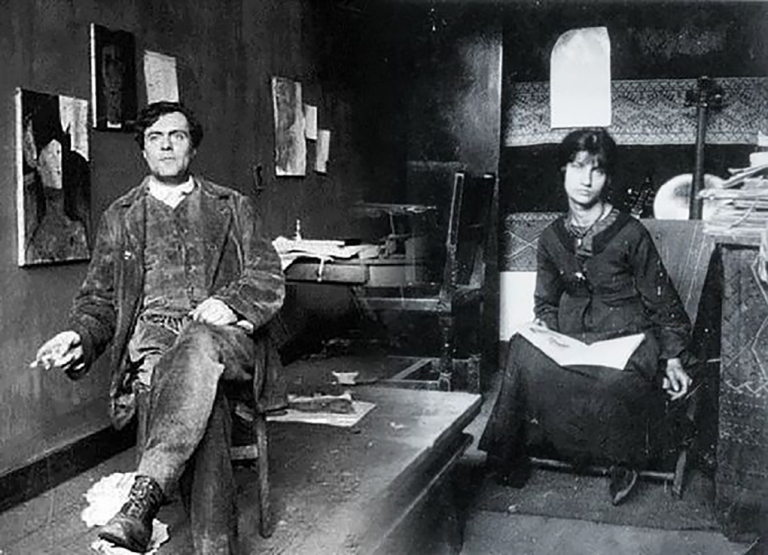
In early 1920 a downstairs neighbour, who was concerned that she hadn’t seen Modigliani or Jeanne for days, went up to check on them. She found Modigliani in bed, barely aware, shaking deliriously with fever; Jeanne, who was 8 months pregnant, fraught with distress, was clinging on to him, too wretched and frightened to leave him to call the Doctor.
On January 24th 1920, at 8:50 pm Modigliani died of tubercular meningitis.
Jeanne was overwhelmed with grief and couldn’t imagine life without him. Inconsolable, her friends took her and her daughter home to their apartment for the night. The next day, on her father’s insistence, Jeanne was taken to her parents’ home. She didn’t cry or make conversation, she was in a bubble of her own anguish.
That night her brother André came to her bedroom to check on her several times, always finding her by the window. When André finally fell asleep, in the early hours, Jeanne threw herself out of the fifth-floor window, killing herself and her unborn child, Jeanne was only twenty-one years old.
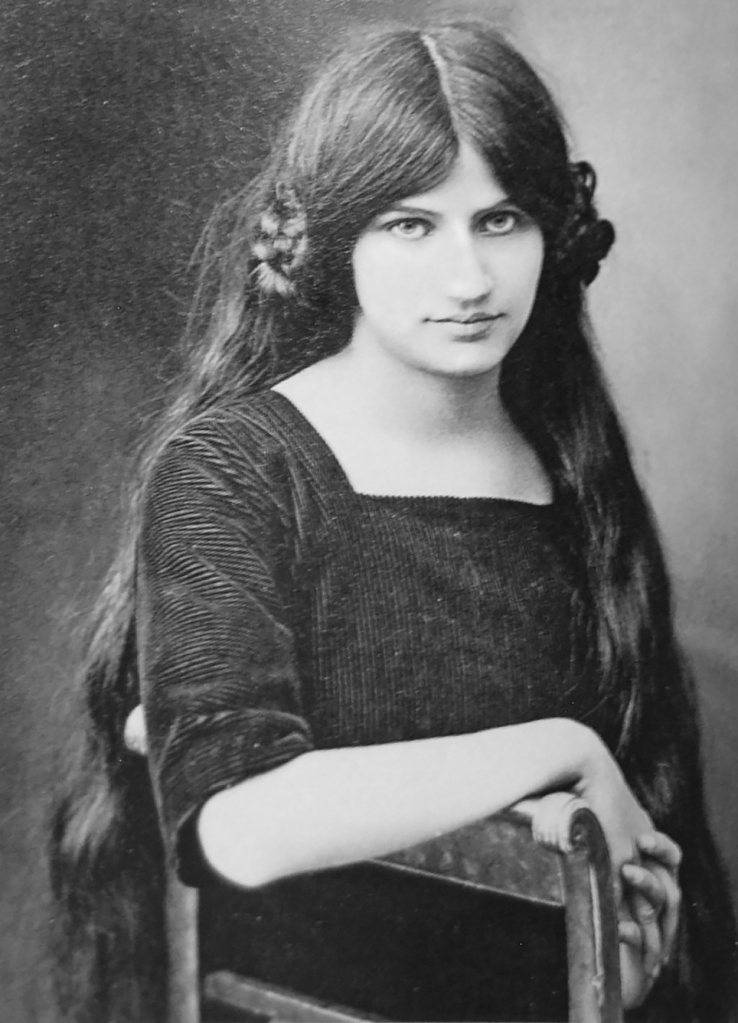
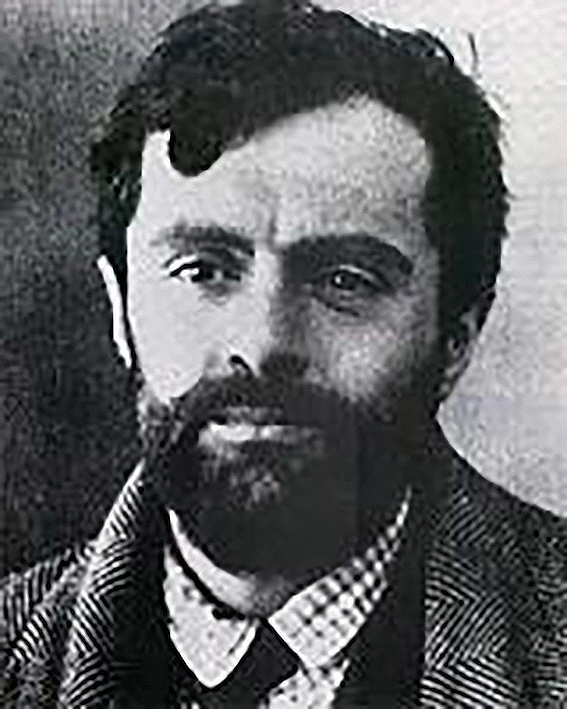
In a final defiant act of manic loyalty to Modigliani, Jeanne’s suicide revealed a different side to her gentle, shy demeanour: a determined and shocking dissent.
Jeanne had been open about her wish to be buried beside Modigliani, but devastated, her aggrieved and acrimonious family interred her in a cemetery outside Paris. It was not until 1930, 10 years later, that her embittered parents allowed her remains to be taken from the Cimetière Parisien de Bagneux to rest beside Modigliani in Père-Lachaise cemetery.

Their fourteen month old daughter Jeanne was adopted by her aunt in the Modigliani hometown of Livorno, Italy, where she was to spend her childhood.
The Hébuternes never recovered from the loss of their daughter or the drama that surrounded her death.
Until recently the family had not release any information or documentation of Jeanne Hébuterne’s legacy. André was her last surviving relative and he left no accounts or journals and would give no interviews. For many years 9 canvases by Jeanne Hébuterne remained in André’s studio in Paris.
It took more than thirty years before an art scholar persuaded the Hébuterne heirs to allow public access to Jeanne Hébuterne’s artwork.
In 2003 six paintings by Jeanne Hébuterne that had been found in her brother’s studio were included in the exhibition “Amedeo Modigliani, de Montmartre à Montparnasse”. The exhibition was held in Caserte and Bari in Italy.
Amedeo Modigliani
Amedeo Modigliani was born in Livorno, Tuscany in 1884, the youngest of four children born to Jewish parents, Flaminio and Eugenia. Shortly before his birth, the family money changing business failed, forcing the Modiglianis to declare bankruptcy, leaving them in dire poverty.
Amedeo’s maternal grandfather, Isaac Garsin played a significant role in his upbringing, he introduced him to literature, poetry, philosophy, and the visual arts at a young age.
In 1895, aged 11 Amedeo contracted typhoid, the first of several serious illnesses that he battled with throughout childhood, including pleurisy and later tuberculosis. It was while he was suffering from typhoid fever that he first told his mother of his wish to be a painter.
At age 14 he left academic education and began to study painting. He first experimented with sculpture during the summer of 1902 and the following year attended the Academia di Belle Arti in Venice.
Paris
Early in 1906 Modigliani moved to Paris, where he settled in Montmartre and attended the Académie Colarossi. At this time the leading artists of the avant-garde were exploring “primitive” art, influenced by art objects and masks from Africa. Henri Matisse, Constantin Brancusi, André Derain, and Pablo Picasso began experimenting in archaic style stone and wood carving. Modigliani was inspired by Paul Gauguin’s raw and immediate carved wood sculptures, which were exhibited in a retrospective that year.
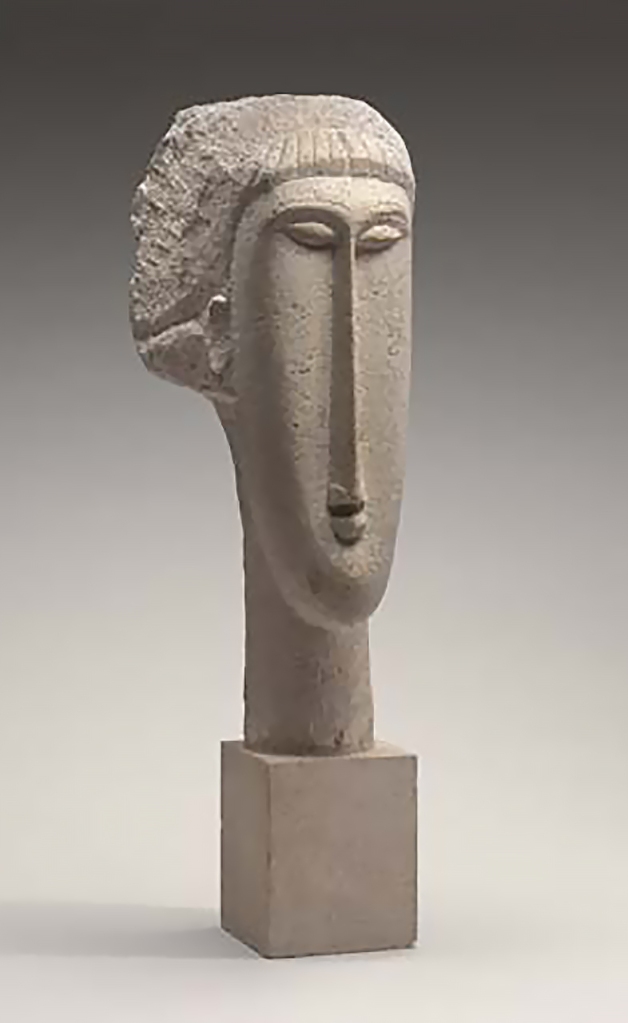
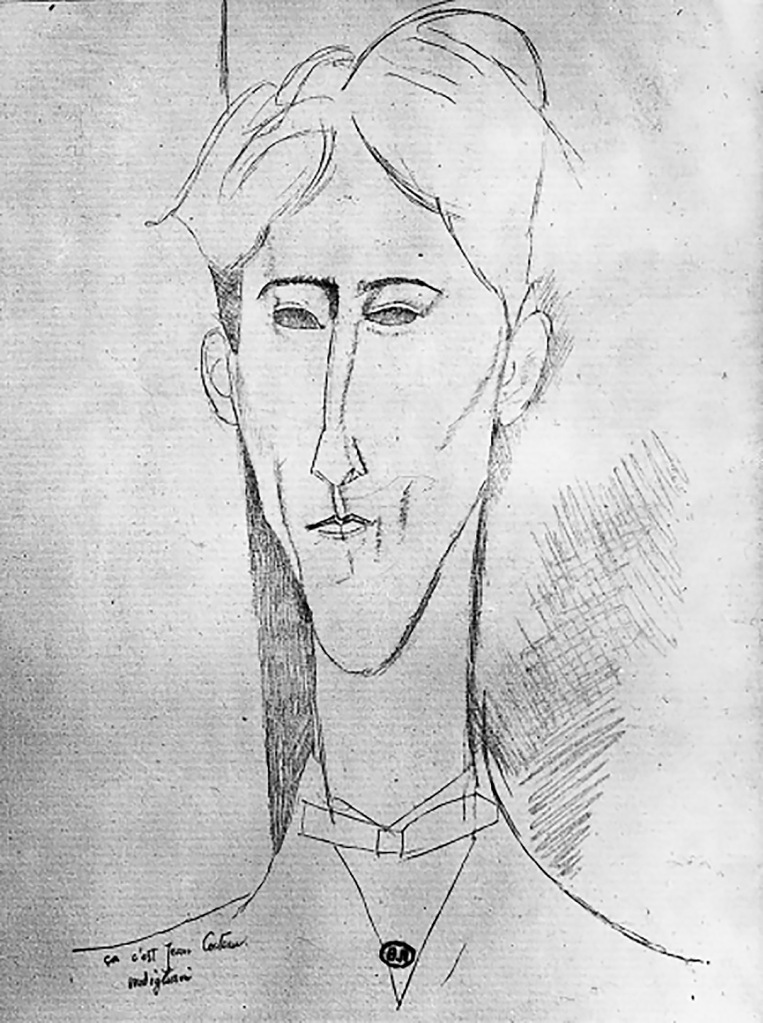

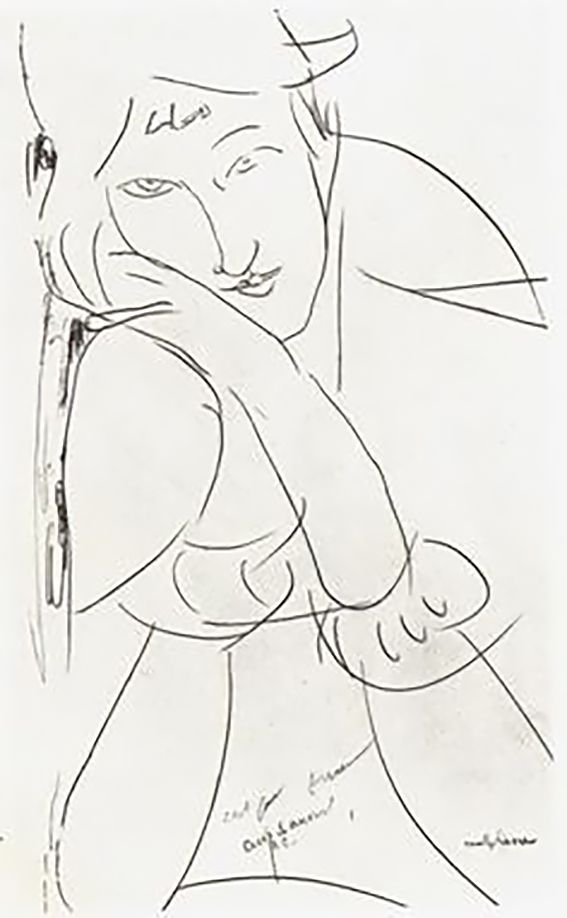
Brancusi became a close friend of Modigliani and strongly influenced his work between the years 1909 and 1915. Modigliani’s time as a sculptor was to be highly significant on his work as a painter, helping him arrive at the abstracted and linear vocabulary of his painting.
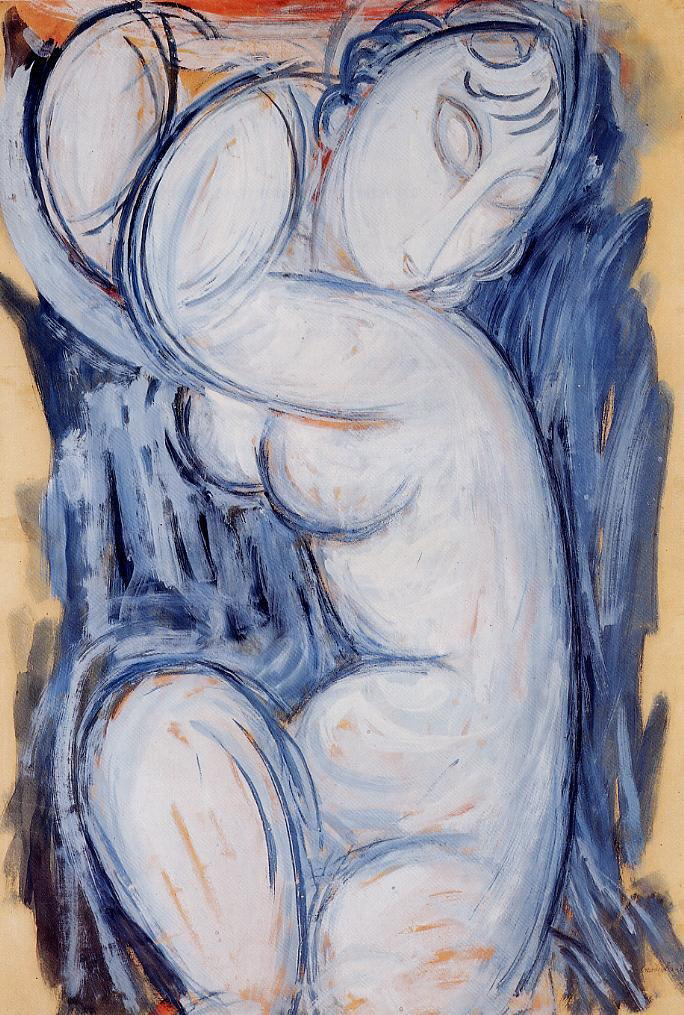
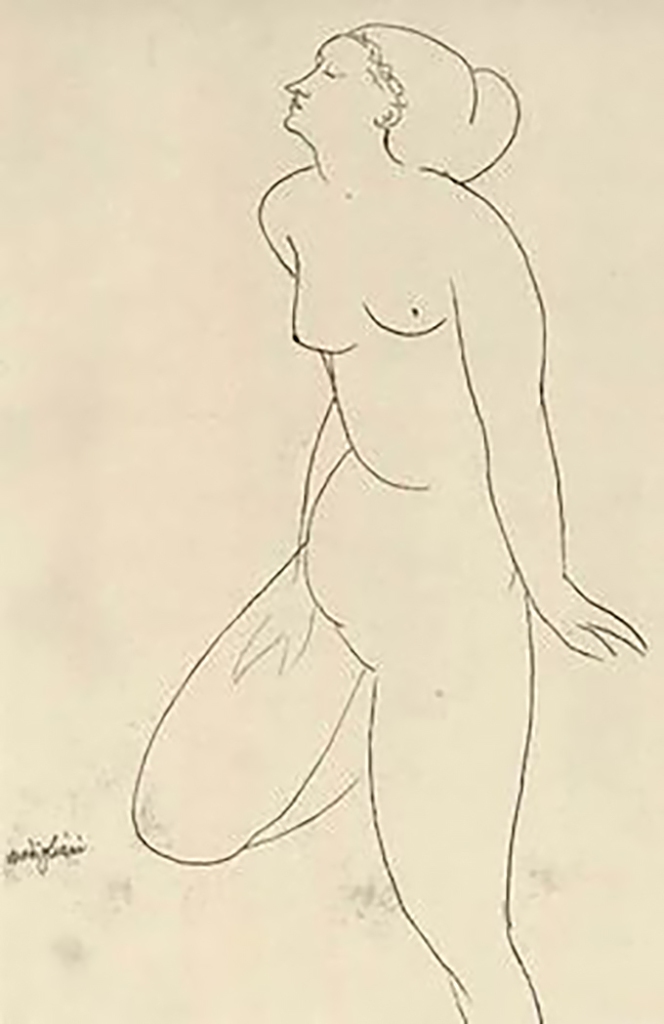

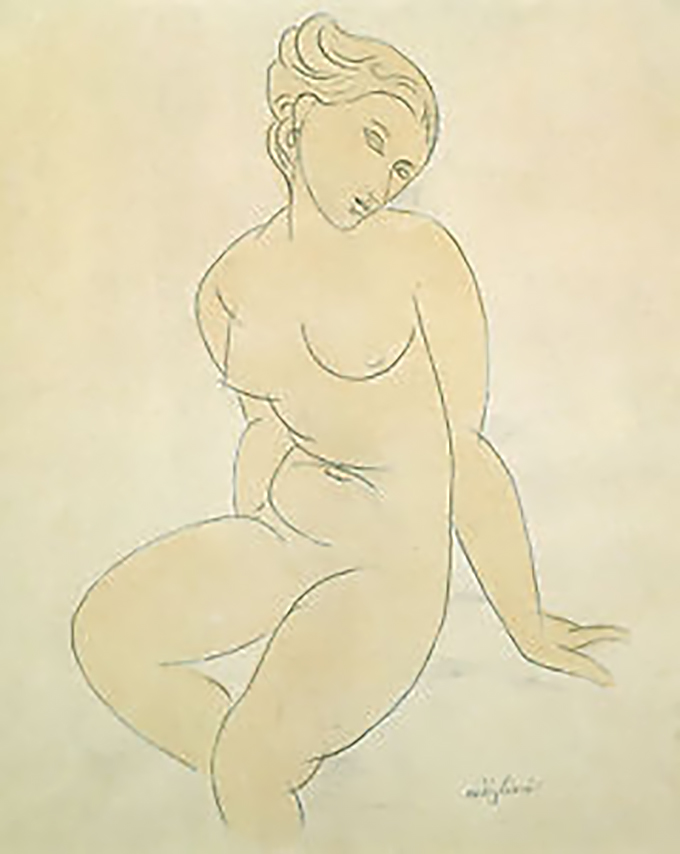
Illness and Lifestyle
In 1914 at the outbreak of the First World War, Modigliani had tried to join the Foreign Legion but he was rejected due to his tuberculosis.
It was about this time that he abandoned sculpture, due to his illness and became a portrait artist in Montparnasse, producing a series of impressive portraits. He painted his friends and artists in Montparnasse, including Picasso, Diego Rivera, Jean Cocteau , Chaim Soutine, Moïse Kisling, Jacques Lipchitz, Juan Gris and Max Jacob.
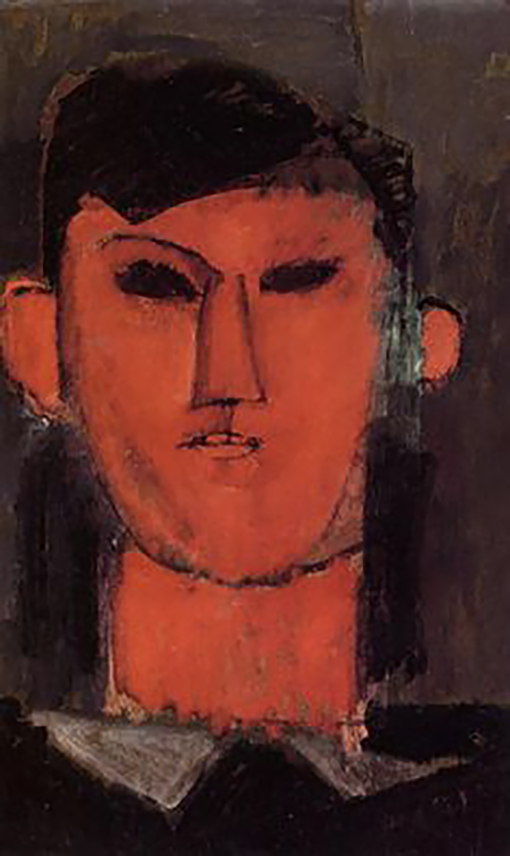
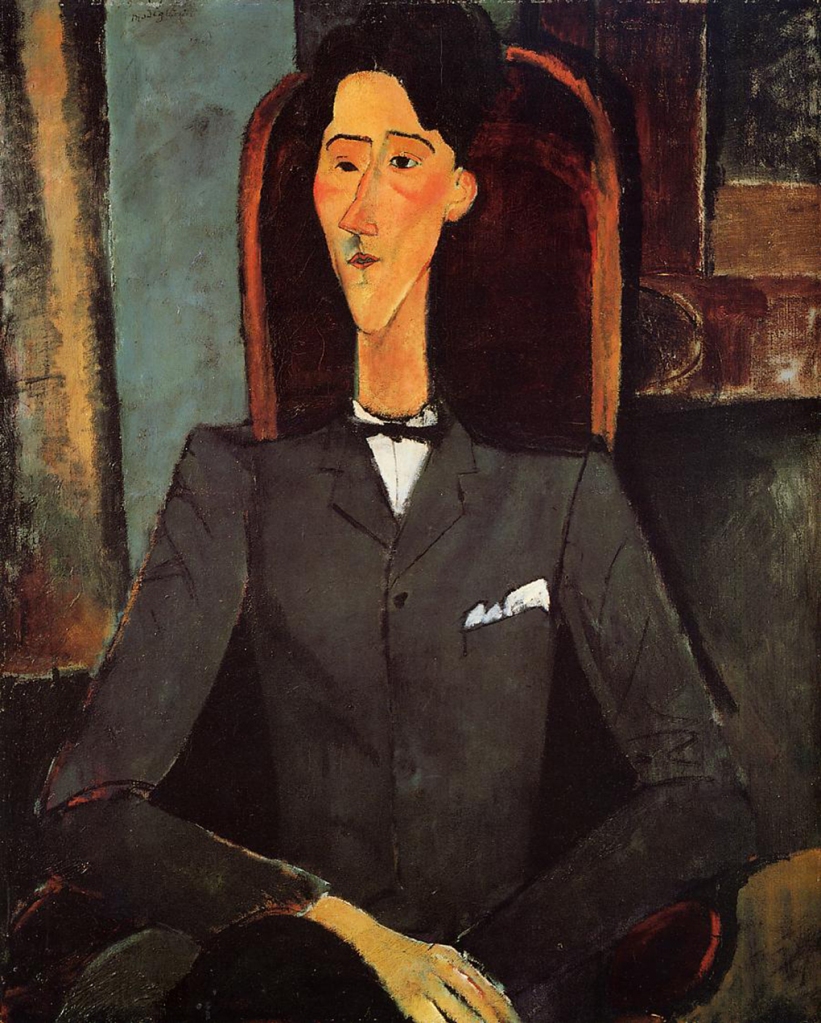
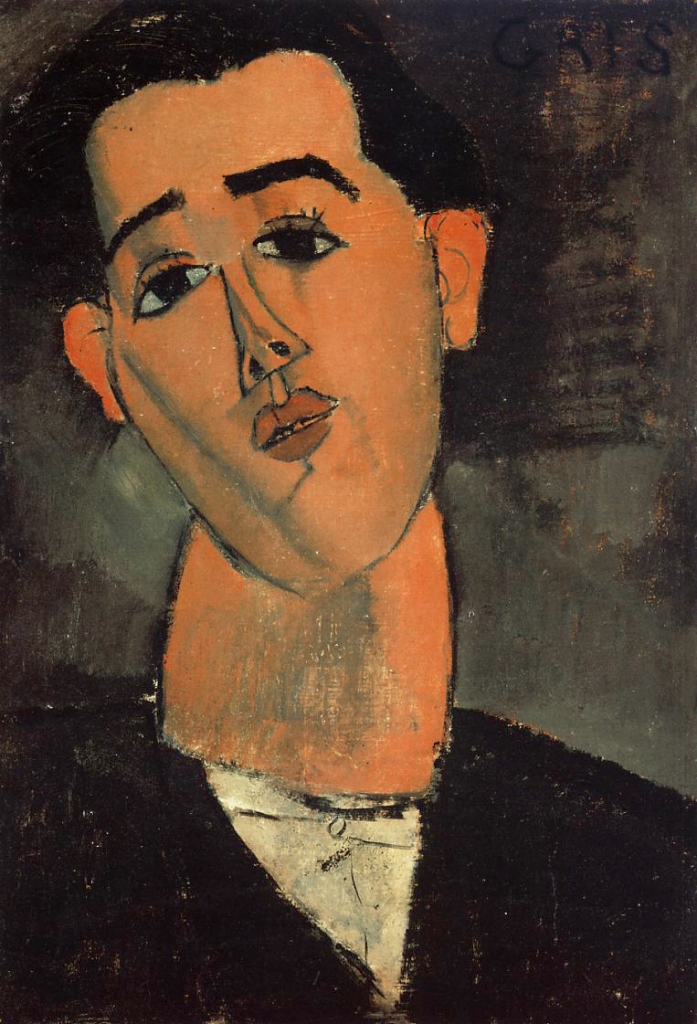

From the time of his arrival in Paris, Modigliani consciously created a new persona for himself, cultivating his reputation as a hopeless drunk and compulsive drug user. His lifestyle became that of the ultimate romantic bohemian; the outsider painter who pursued his own vision amid a vortex of drugs, alcohol and dissolution.


Modigliani’s behaviour stood out even in his liberal Bohemian surroundings of Montmartre and Montparnasse. He had frequent affairs, drank heavily and used absinthe and hashish, which would lead him sometimes to strip himself naked at social gatherings.
It is possible that his escalating intake of drugs and alcohol may have been a means by which Modigliani masked his tuberculosis from his acquaintances, few of whom knew of his condition.
Tuberculosis was the leading cause of death in 1900 and highly contagious, there was no cure and those who had it were feared, ostracised and pitied. Had the severity of his illness been known he would have been tucked away in an infirmary or convalescent home. Modigliani thrived on camaraderie and would not have let himself be isolated as an invalid; therefore he used drink and drugs as palliatives to ease his physical pain, helping him to maintain a facade of vitality and allowing him to continue to create his art.
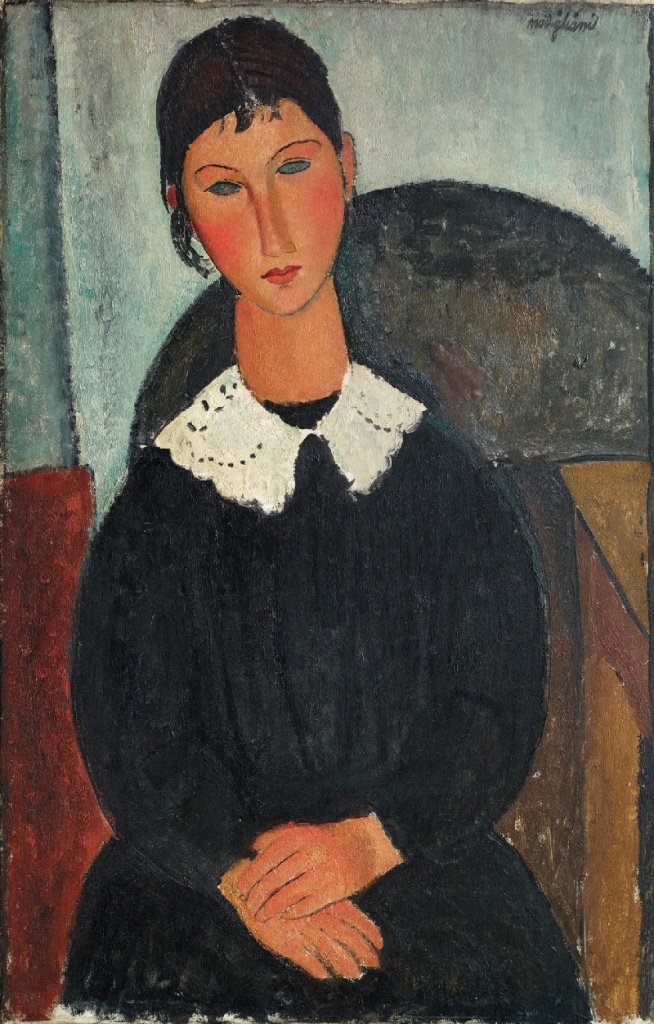
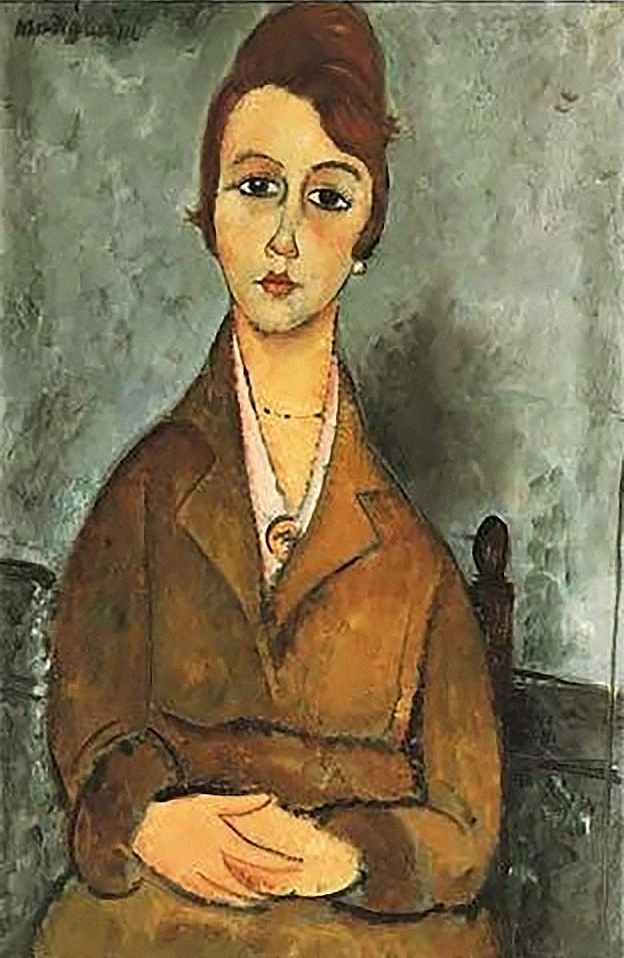
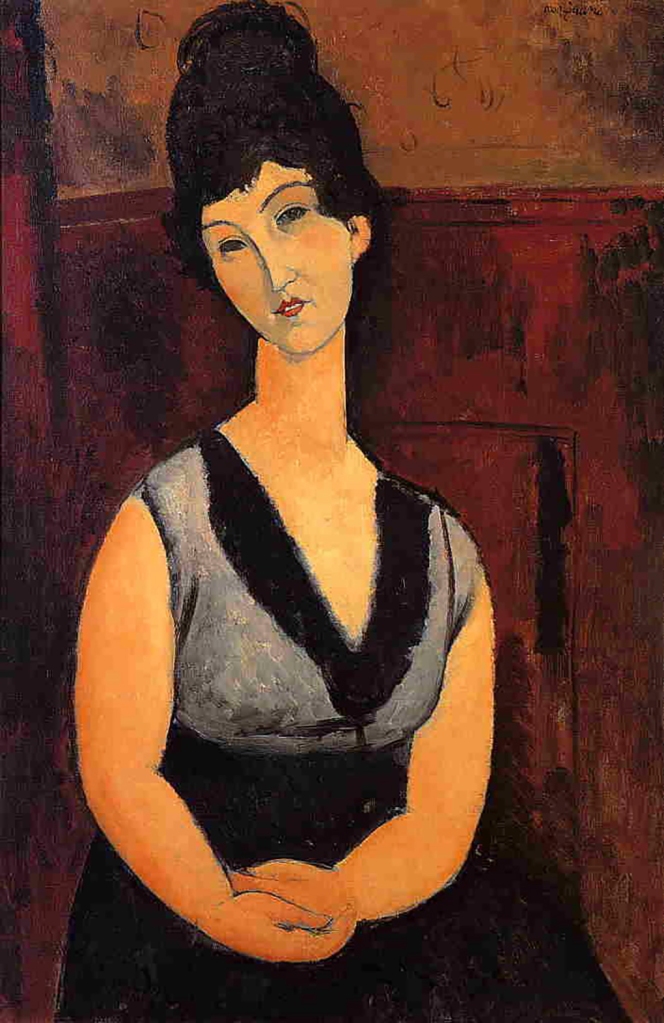
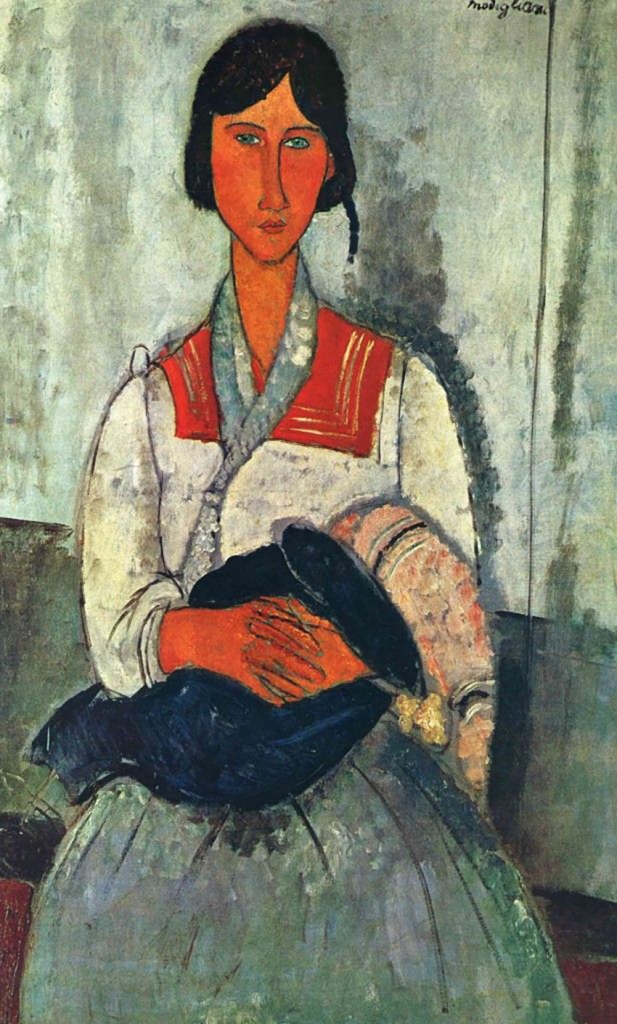
Jeanne
In 1917, Modigliani was introduced to the beautiful 19 year old art student, Jeanne Hébuterne. She became his sole muse and model and they both fell deeply in love.
Jeanne was a Roman Catholic from a very conservative, bourgeois family and was 14 years younger than Modigliani, so when Jeanne’s family discovered the relationship, several months after it had started they were appalled. Not only was Jeanne underage but Modigliani, dressed like a vagabond, appeared to them to be a lecherous drunk. Despite their protests, Jeanne became Modigliani’s lover and moved in with him, becoming his mistress. Modigliani’s behaviour was not toned down by their union, as there were very public scenes between them which became as prominent as Modigliani’s drunken exploits. In 1918, Jeanne gave birth to their baby daughter.
In the last three years of his life, Modigliani painted Jeanne in more than twenty works but not once does she appear naked. Modigliani chose only professional models for his nudes.
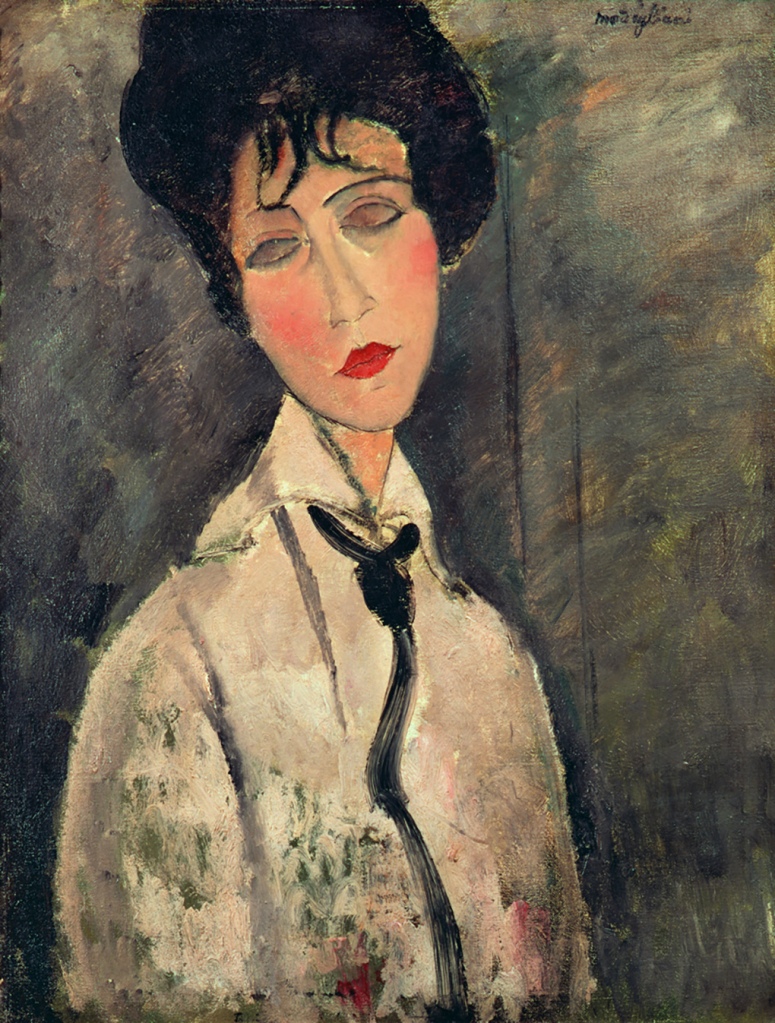
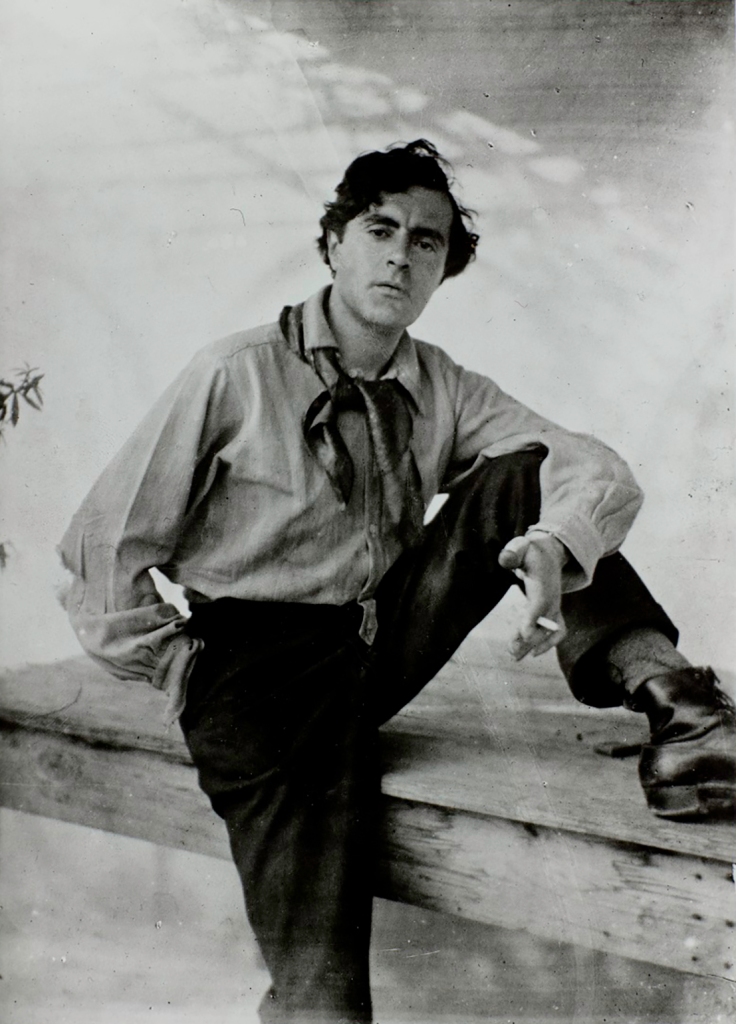
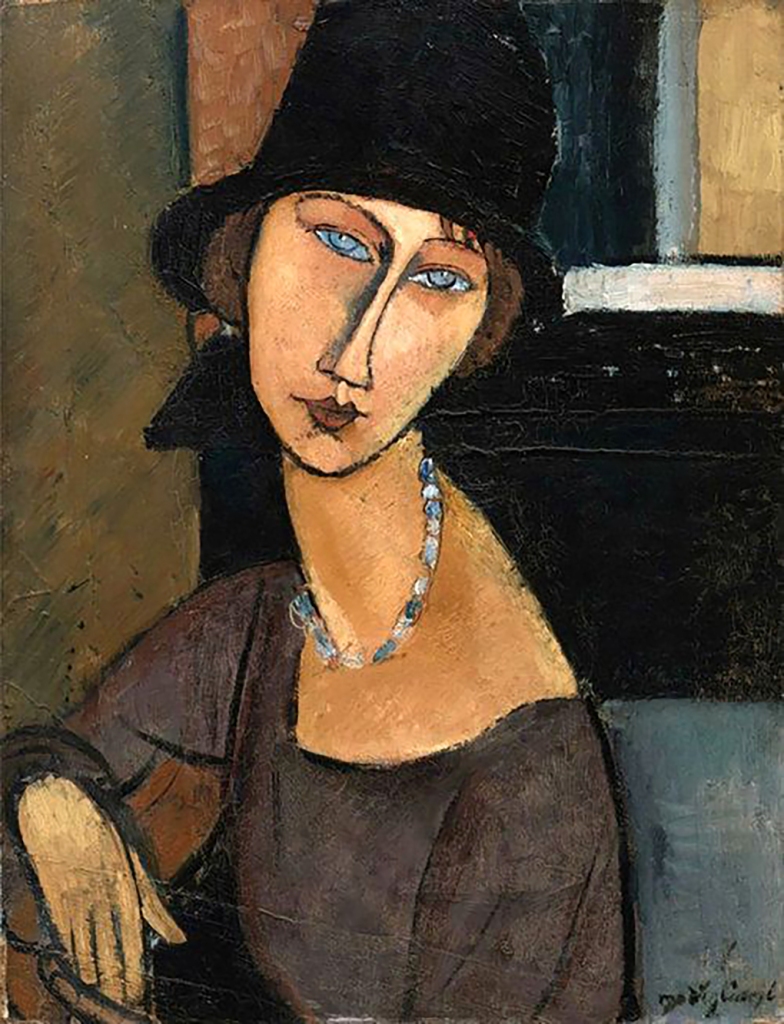
Work
Modigliani painted the human figure almost exclusively and created at least 26 reclining female nudes. The impact of the Modernist approach on his art was great, although he felt a deep connection with tradition. Titian, Goya, and Velázquez informed and inspired his nudes.
However, Modigliani’s figures differed conspicuously to the traditional nude by the degree of raw sensuality they conveyed. They had the appearance of being devoid of the modesty and mythological context of earlier paintings of nude figures.
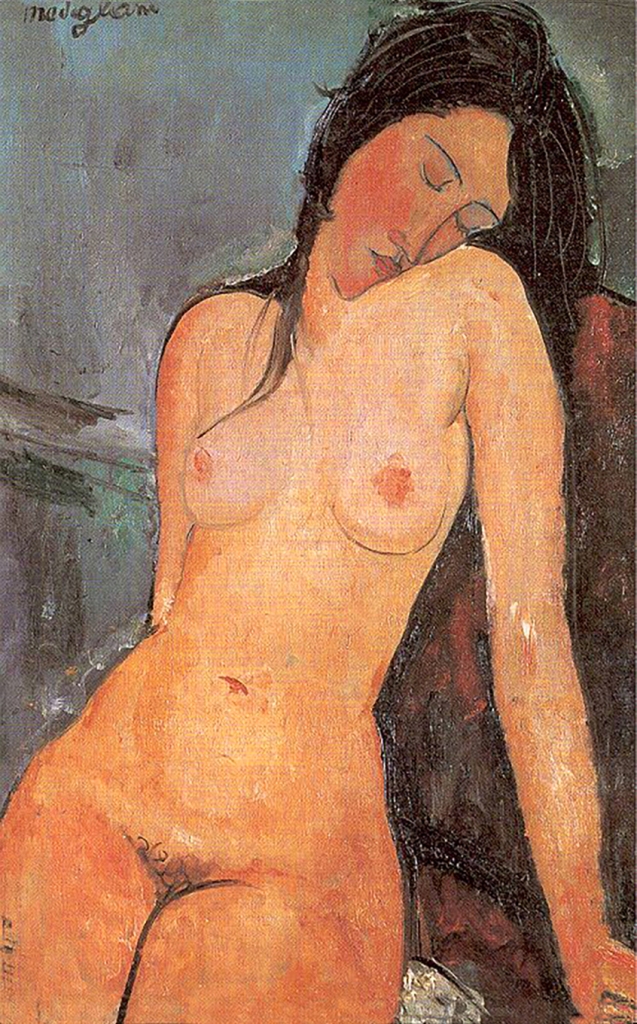
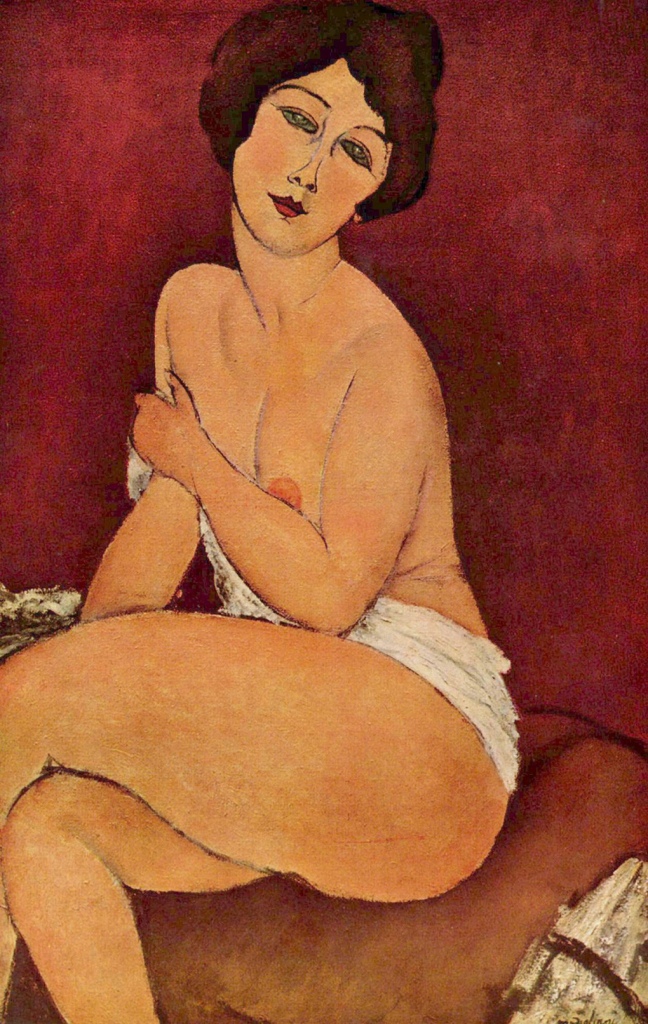
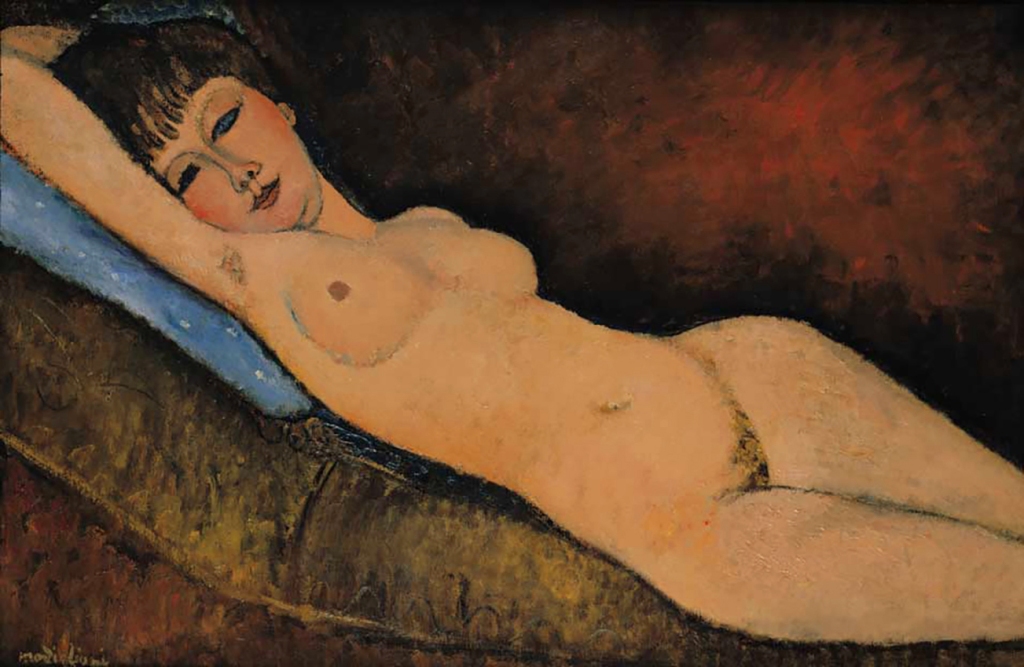
On December 3, 1917, Modigliani had his first one-man exhibition at the Berthe Weill Gallery. The chief of the Paris police was scandalised by Modigliani’s nudes and forced him to close the exhibition within a few hours after its opening. His nudes were considered lustful and lewd, partly because they depicted body hair, but also due to the confrontational way the naked torsos were thrust compositionally to the front of the canvas.
Perhaps Modigliani’s reputation for debauchery also played a part in scandalising general opinion at the time.
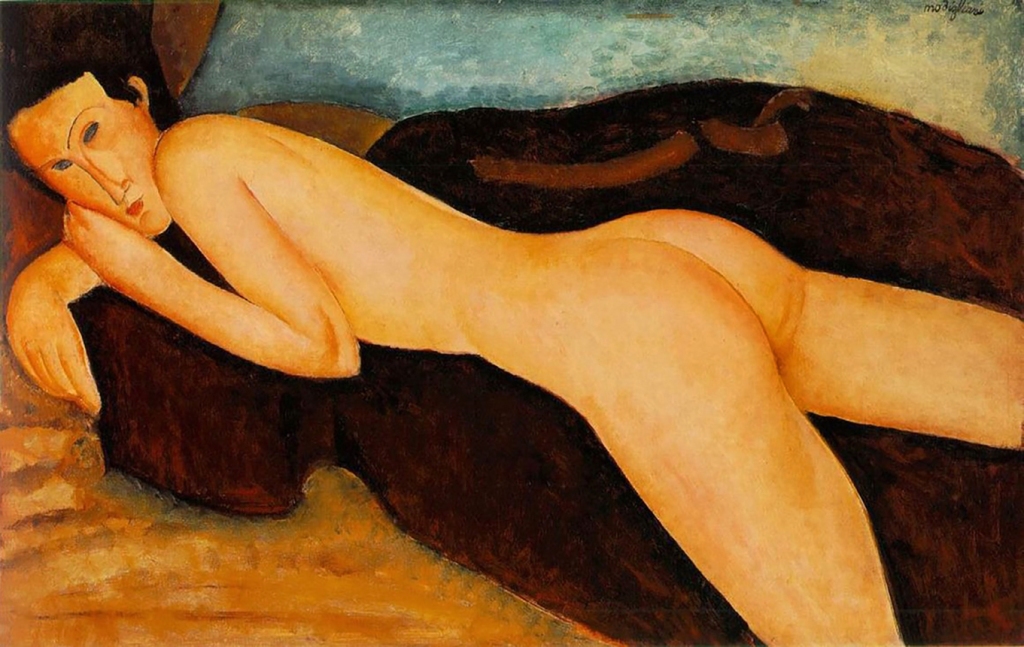

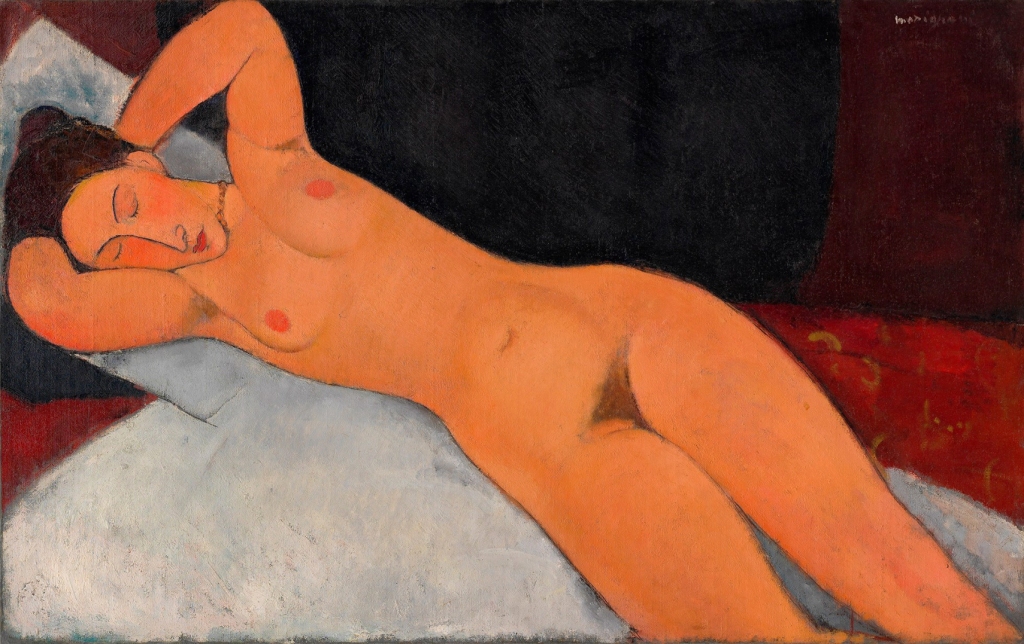
Unlike his portraits his nudes were painted using models not friends, they were images of erotic beauty and had no real personality.
In contrast, with his portraits Modigliani aimed to express the character of his sitter and to explore the inner person, invariably he depicted them in a shallow, confined space to increase the sense of intimacy.
With their elongated, melancholic faces and almond shaped eyes Modigliani had a style of his own, displaying his fascination with the human form and physiognomy. The surfaces of the paintings were smooth and thinly painted, some almost sparsely so, permeated with a sombre mood.
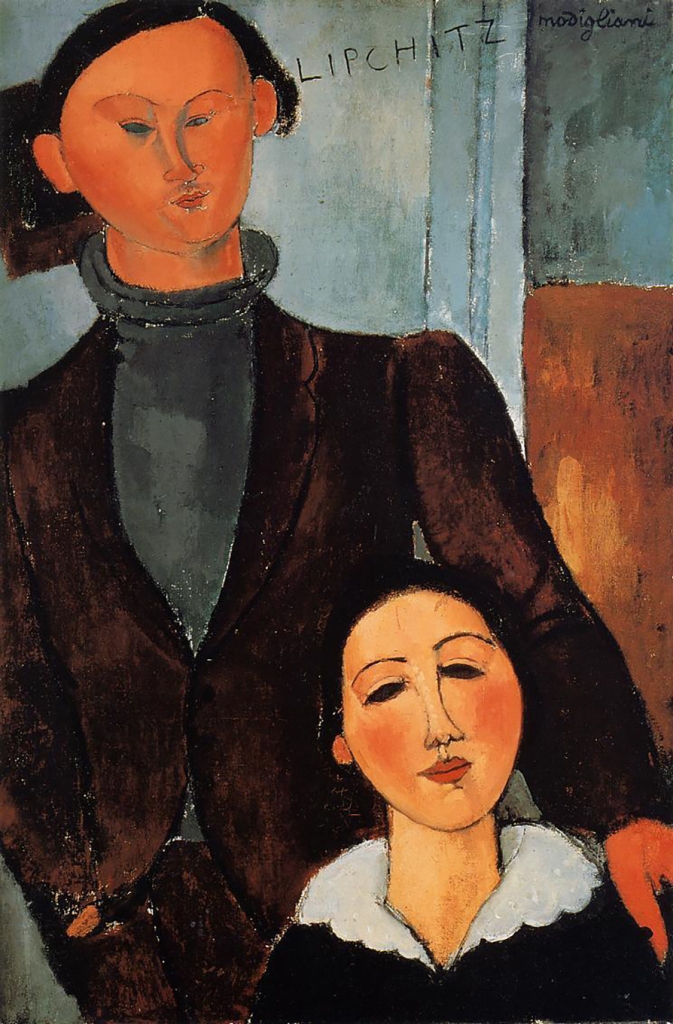
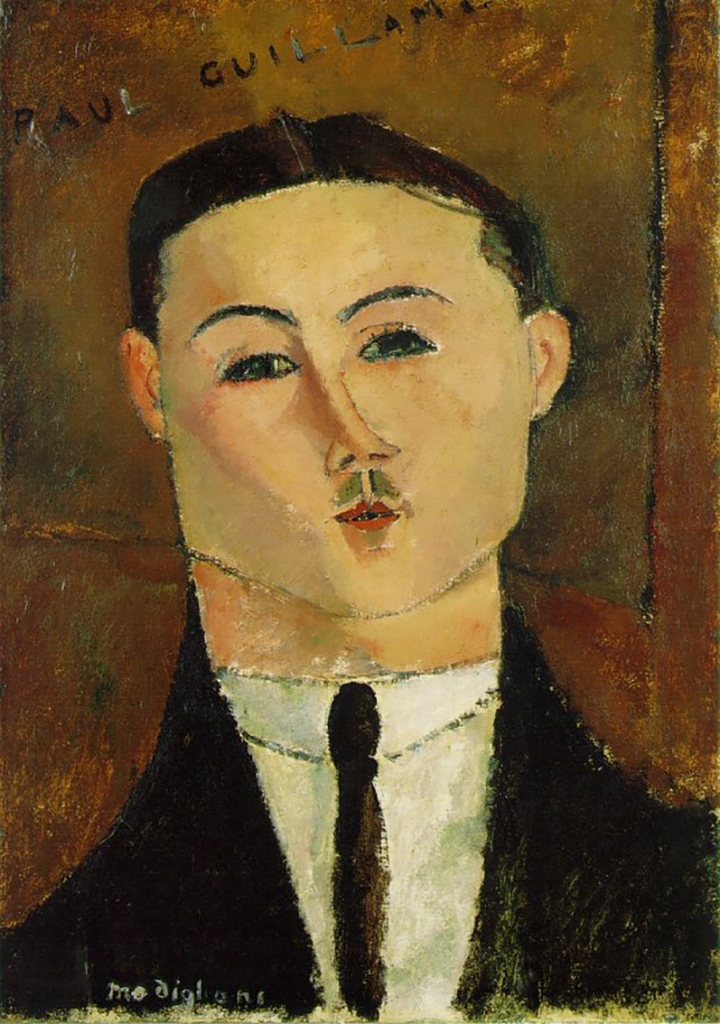
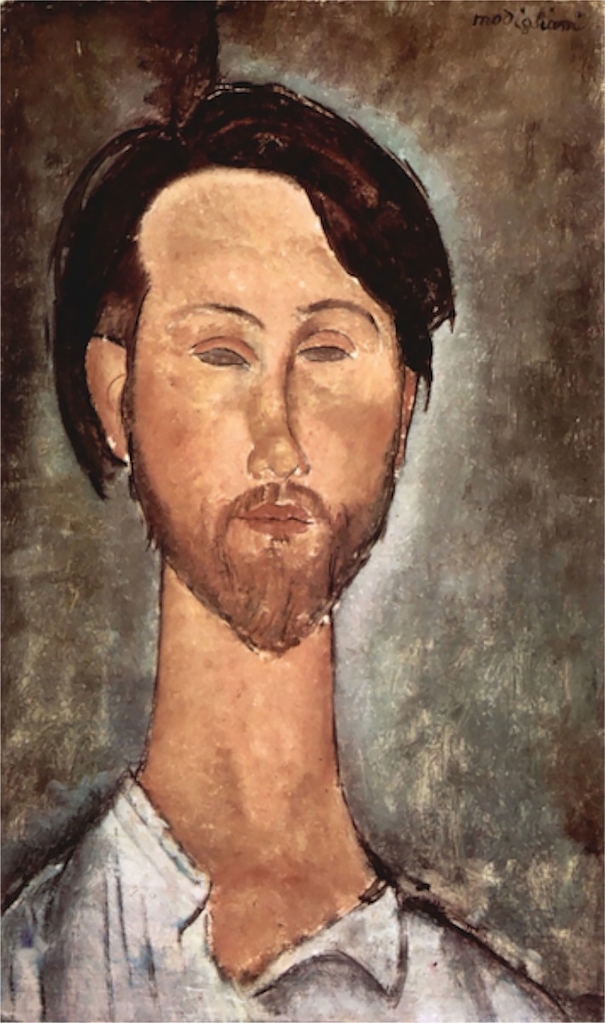
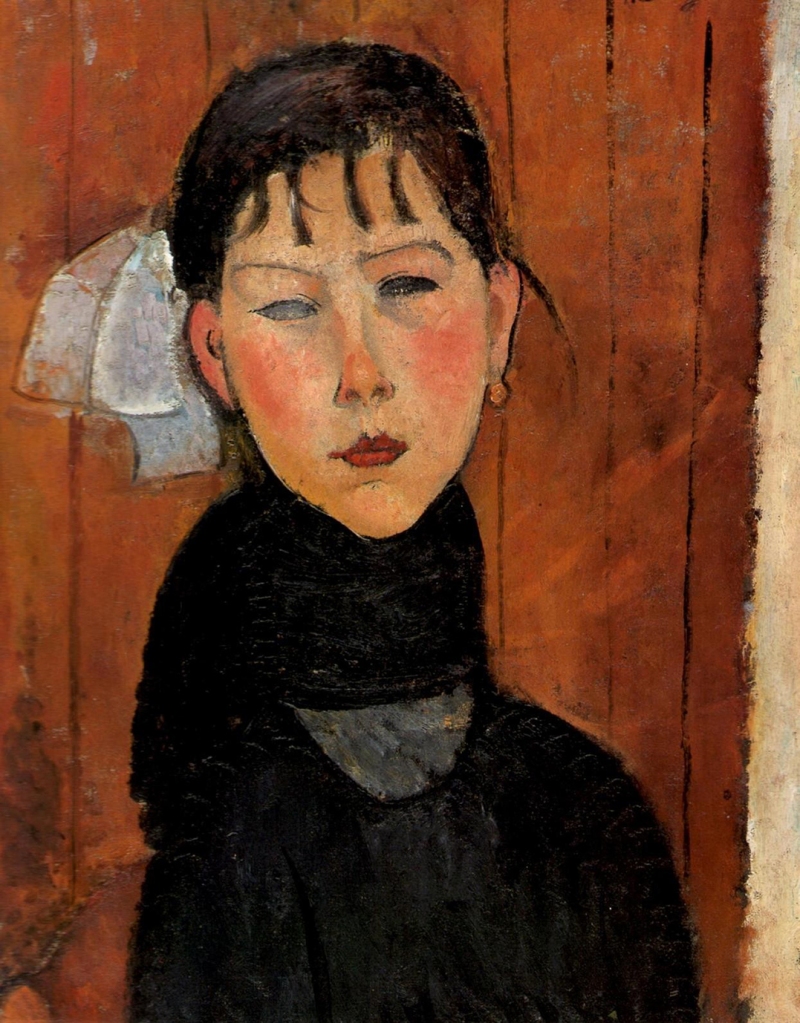
Although appreciated at the time by his contemporaries, Modigliani could barely scrape a living from his paintings. The French dealer, Paul Guillaume sold his work between 1914 -1916 and was one of the first dealer /collectors to exhibit African art.
After 1916, the Polish art dealer Léopold Zborowski, supported Modigliani in exchange for his entire output. Zborowski was also the dealer for Marc Chagall, André Derain, Maurice Utrillo and Chaim Soutine.
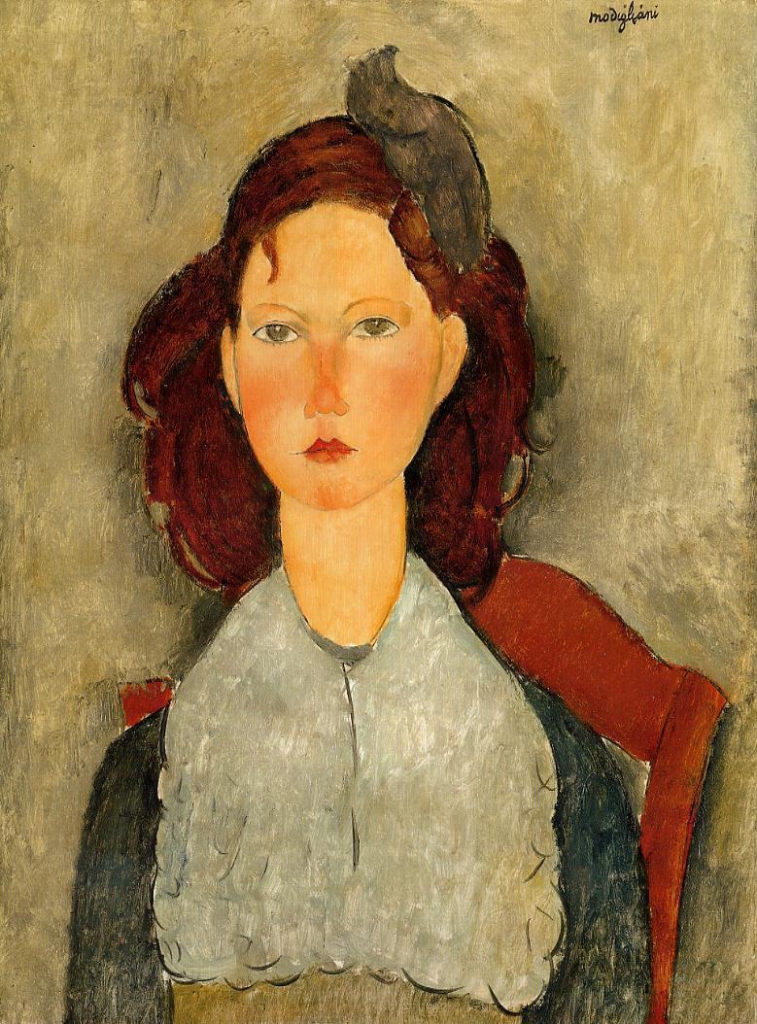
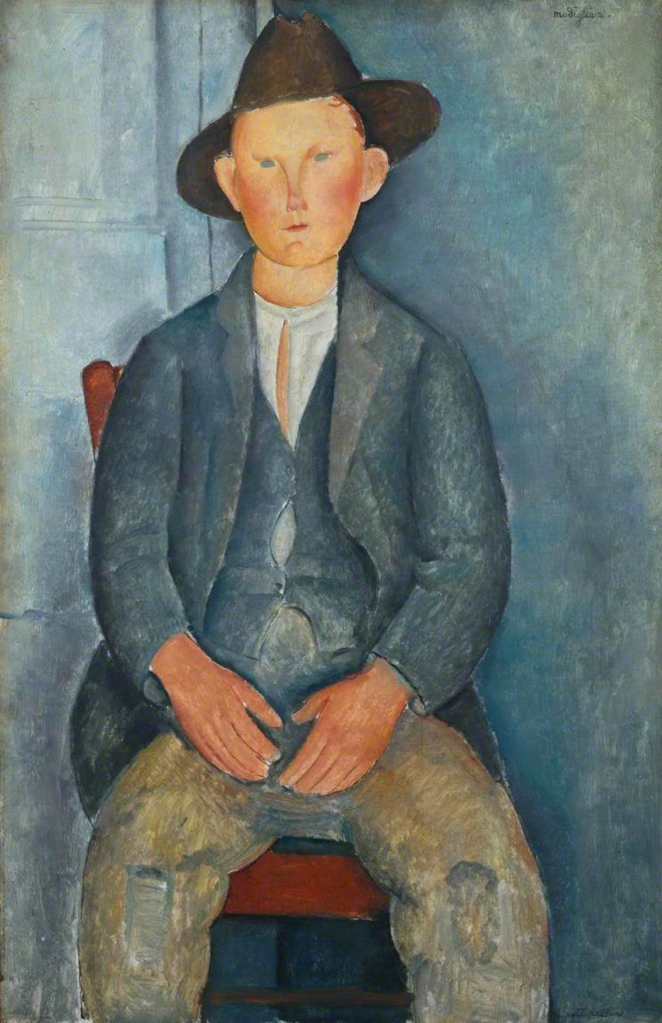
During his lifetime Modigliani sold a number of his art works, but not for a great sum of money, what funds he did receive soon vanished to support his habits.
In January 1920 aged 35 and destitute, Modigliani died of tubercular meningitis. Two days later Jeanne, who was pregnant with their second child, committed suicide.
The funeral was enormous, attended by friends and artists from Montmartre and Montparnasse. He was buried in Père-Lachaise cemetery. Ten years later, the Hébuterne family finally relented and allowed Jeanne’s remains to be transferred to rest beside Modigliani.
In his short life as an artist Modigliani modernised the two enduring themes of art history: the portrait and the nude.
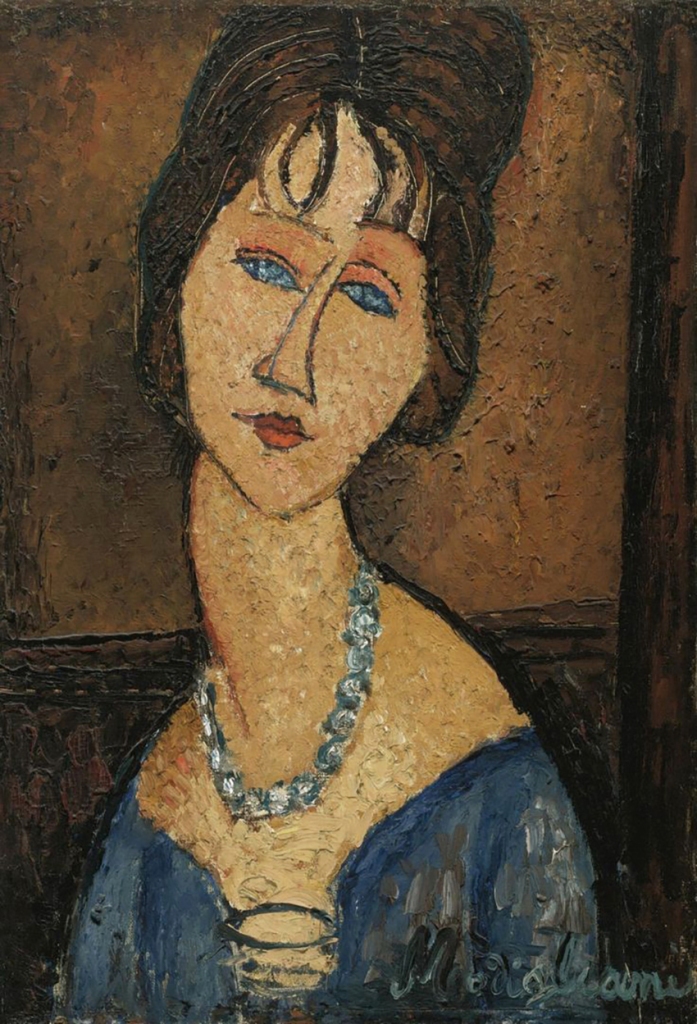
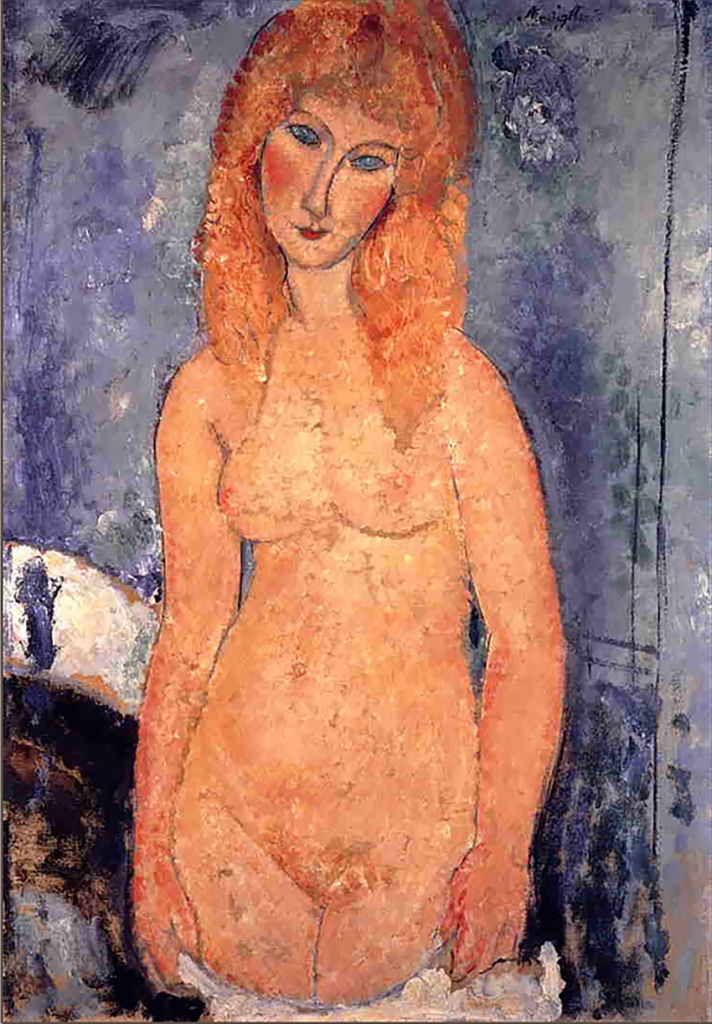
Not closely linked with any one particular early-twentieth-century “ism,” Modigliani found his own signature style that fused aspects of contemporary European Cubism with non-Western art forms. His portraits and nudes overturned the conventions of both genres and continue to inspire and influence artists today.

Other 20th Century muses by Marina
Lydia Delectorskaya Matisse’ muse
Marie-Thérèse Walter Picasso’s muse
Dora Maar Surrealist
Emilie Flöge Klimt’s muse
Frida Kahlo muse
Teha-amana Gauguin’s muse


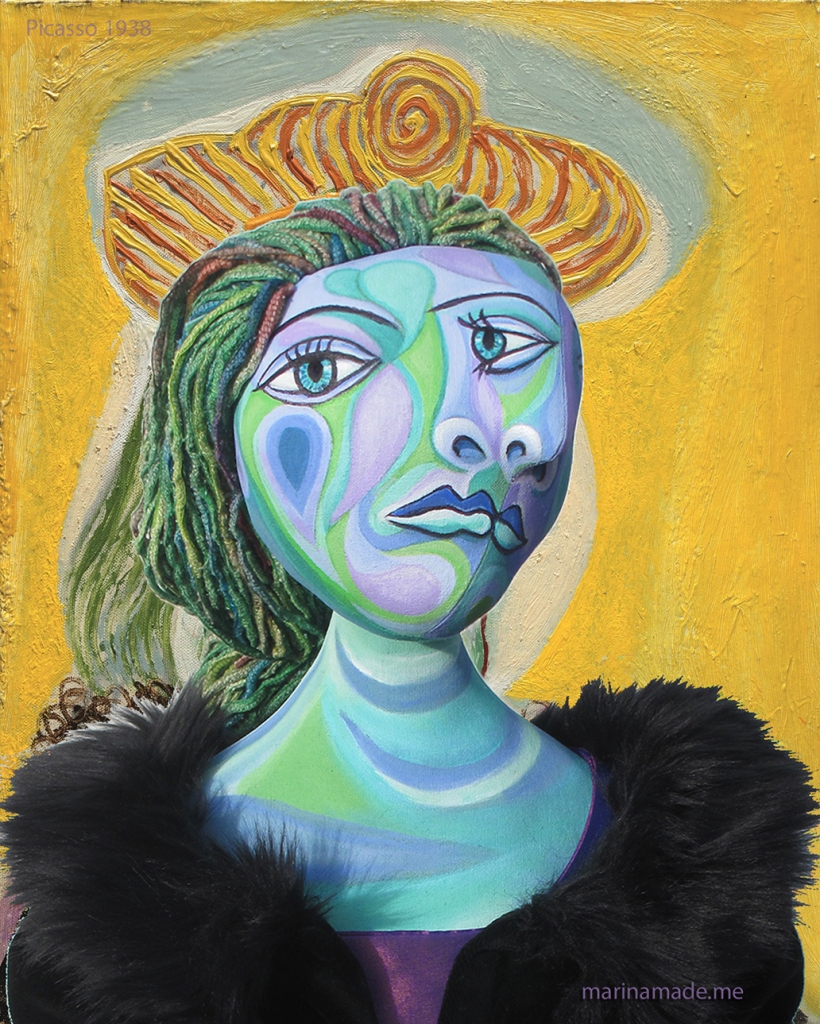
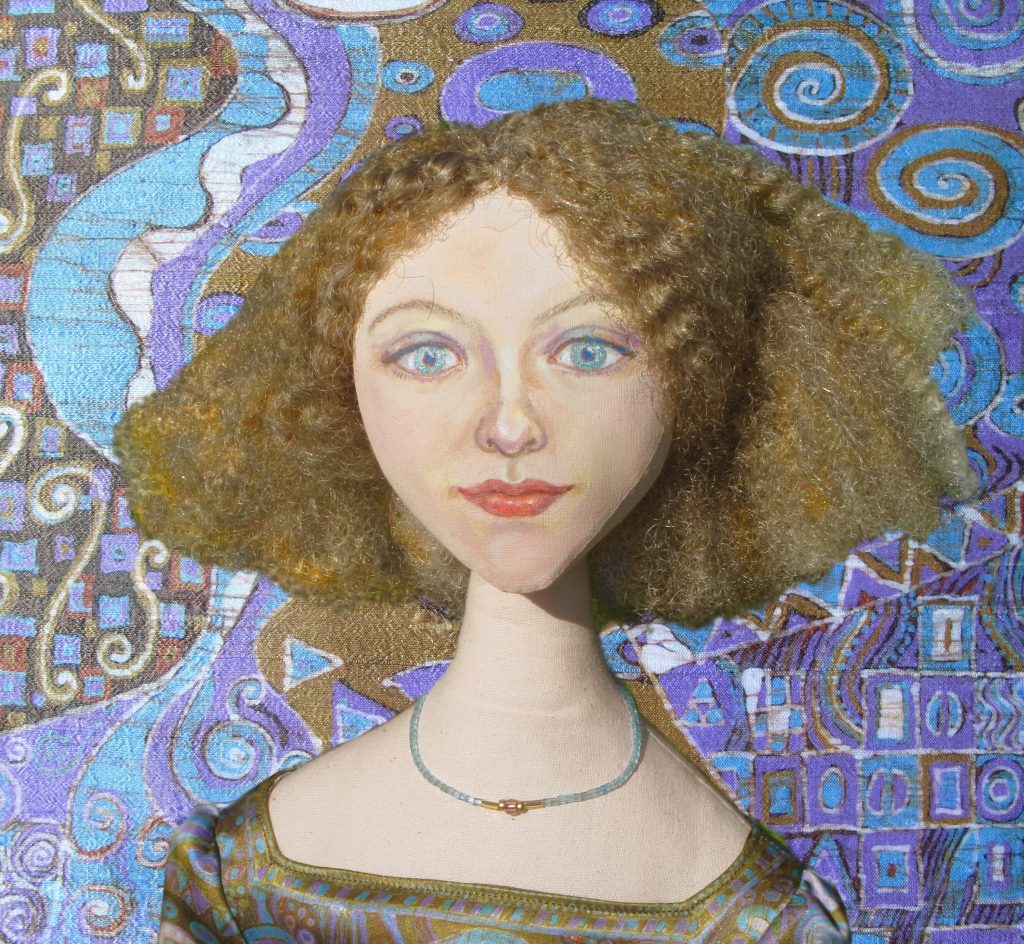



References
https://www.guggenheim.org/artwork/artist/Amedeo-Modigliani
https://www.modigliani-foundation.org/biography.html
bonjourparis.com/history/artists-in-paris-the-tragic-life-of-amedeo-modigliani/


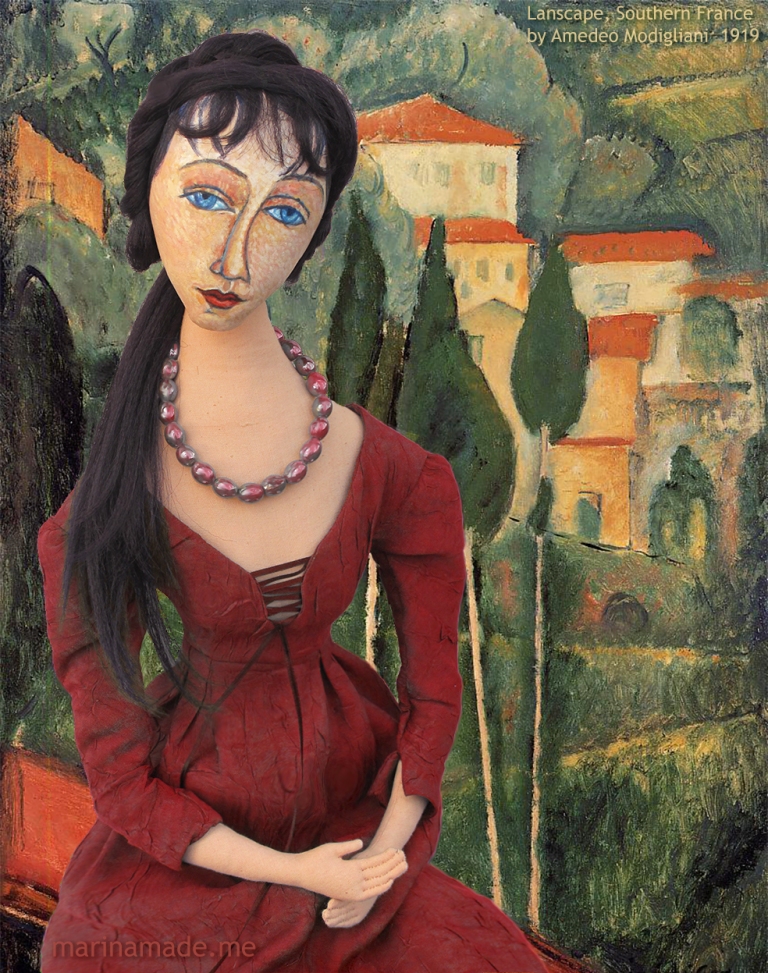
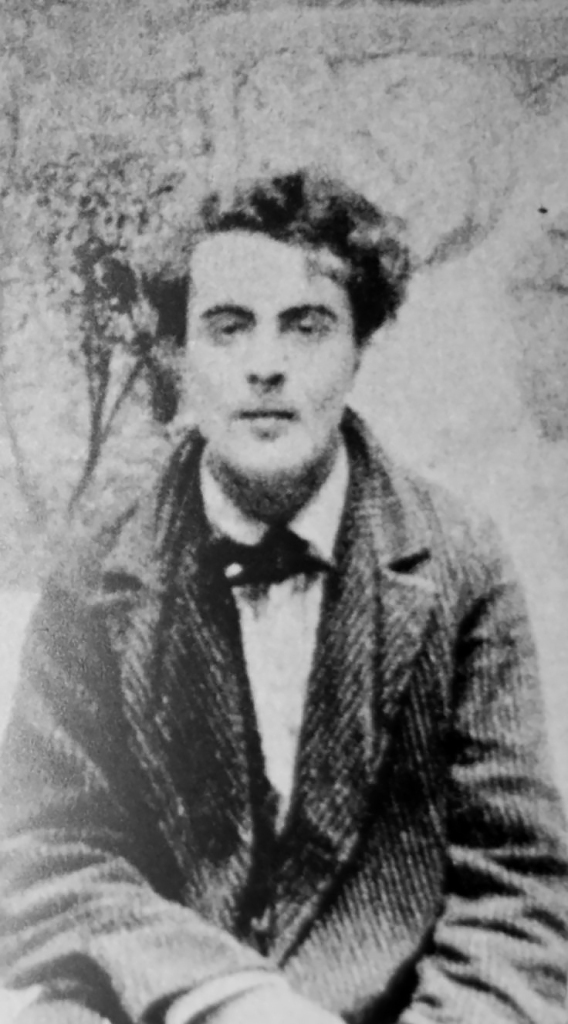
Thoroughly enjoyed this wonderful piece of research. Modigliani happens to be my favourite artist. I always detected some melancholy in his work and now perhaps I understand why. Hebuterne’s work was wonderful too, unique and yet somehow reminiscent of her lover’s style. I wonder how they influenced each other.
LikeLiked by 1 person
Reblogged this on Art in Europe.
LikeLike
I just saw a portrait by Amedeo and did some research and am fascinated by his works, history and talent. It’s a shame he didn’t make my h money, drank, and did drugs but the talent was always there. Sad personal life. I hope more people learn and appreciate his beautiful work.
LikeLike
Thanks so much for the well-researched article.
LikeLike
Hi Marina. What a delight and an amazing likeness of Modigliani’s muse. I had to look twice not to see her as part of the artist’s painting. Your research is getting more and more extensive and makes fascinating reading. I agree with the comment that your work should be compiled into a book for students and the wider public at large. You truly deserve recognition by the art establishment and publishers. We are indeed proud of you our talented daughter.
Sent from my iPad
>
LikeLike
Fascinating Marina. Your research is so extensive and brilliantly written. You should collate all your Muses into a book. It would be a brilliant art history for students to study.
Well done. I love them all.
Love
Ali xxx
Sent from my iPad
LikeLike
Thanks Ali, the research is becoming a bigger part of the project, enabling me to discover more about artists I didn’t know that well. I can see the education value in the muses and a book would be an idea, we will see…
LikeLike